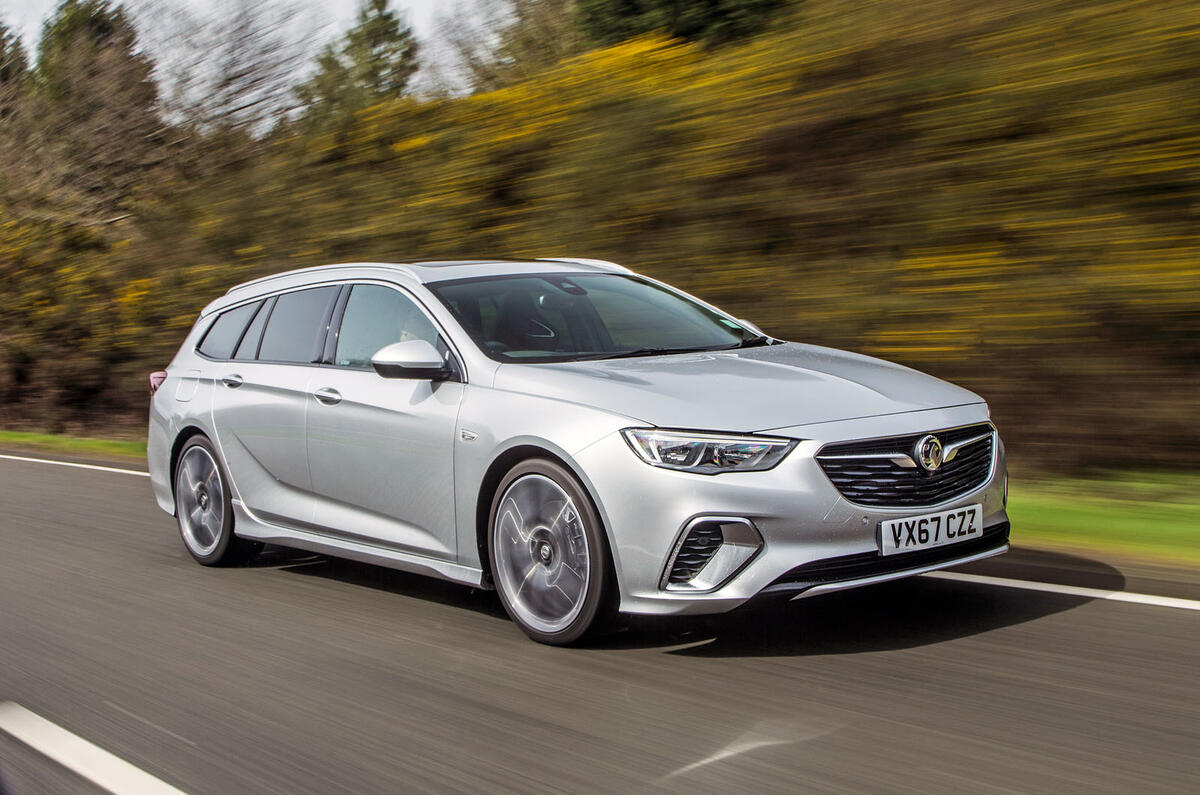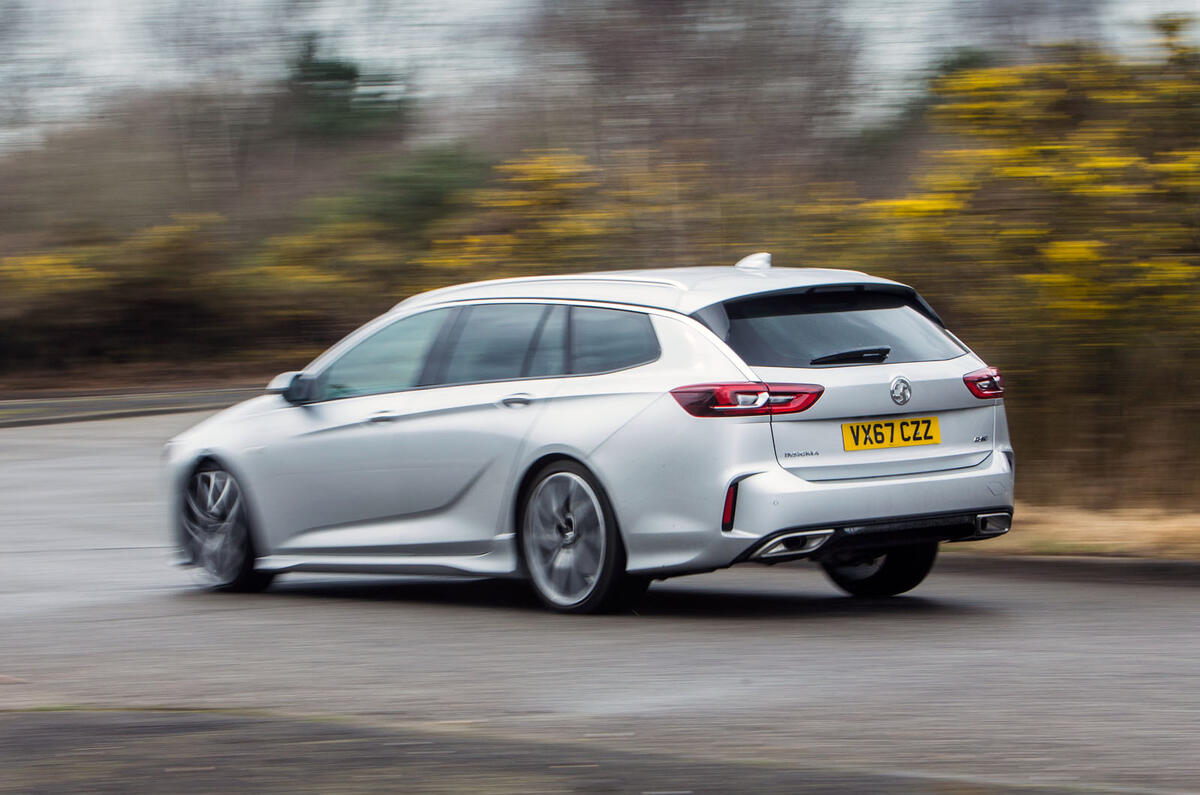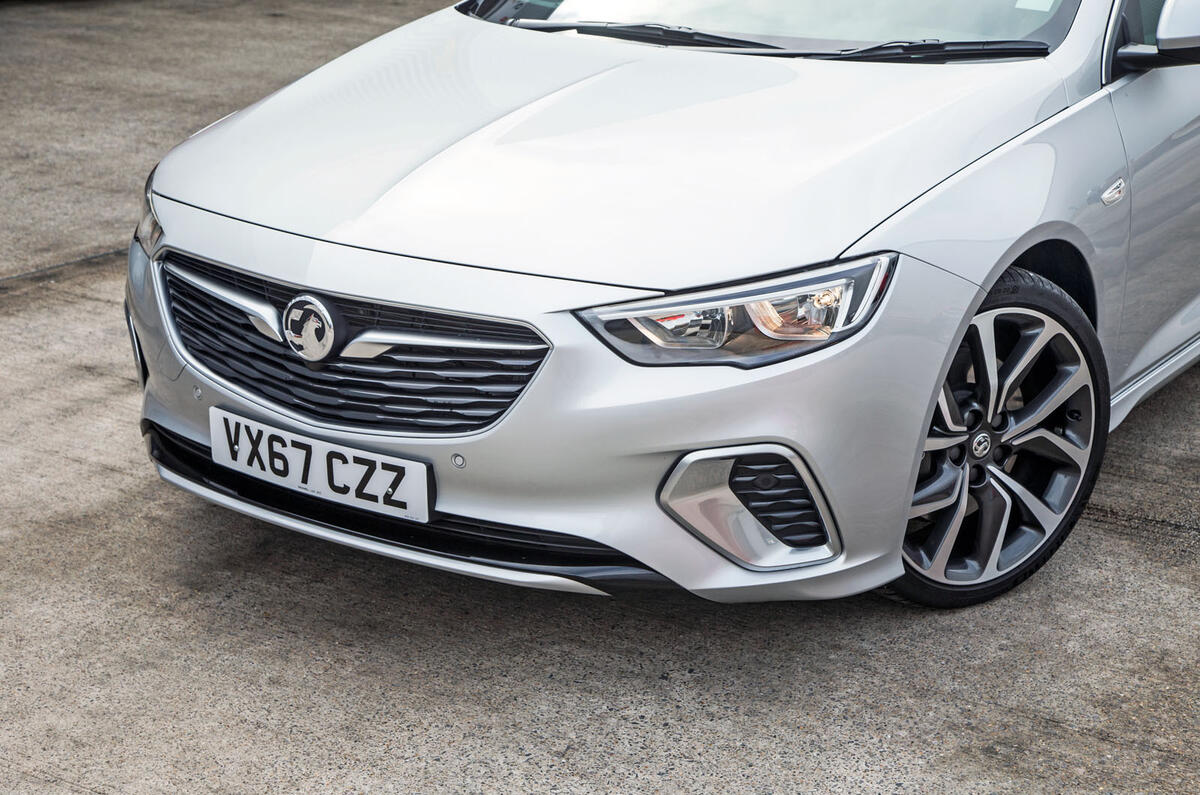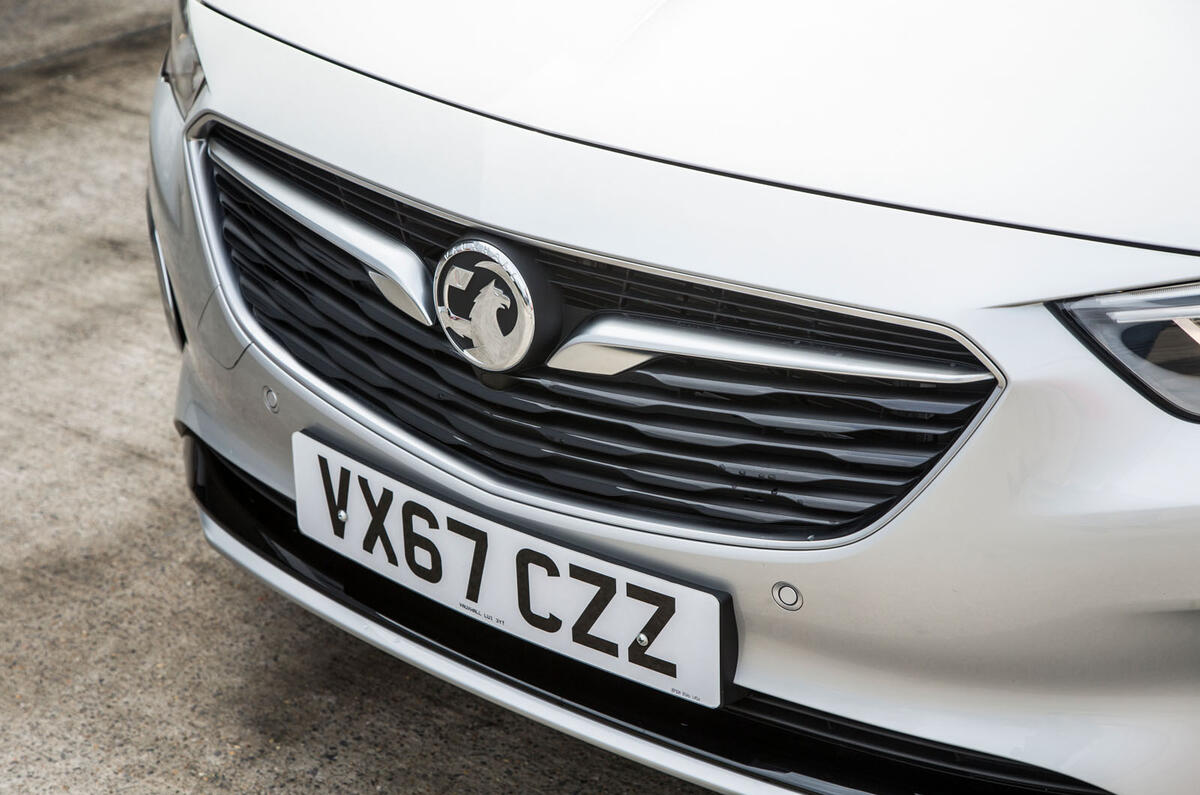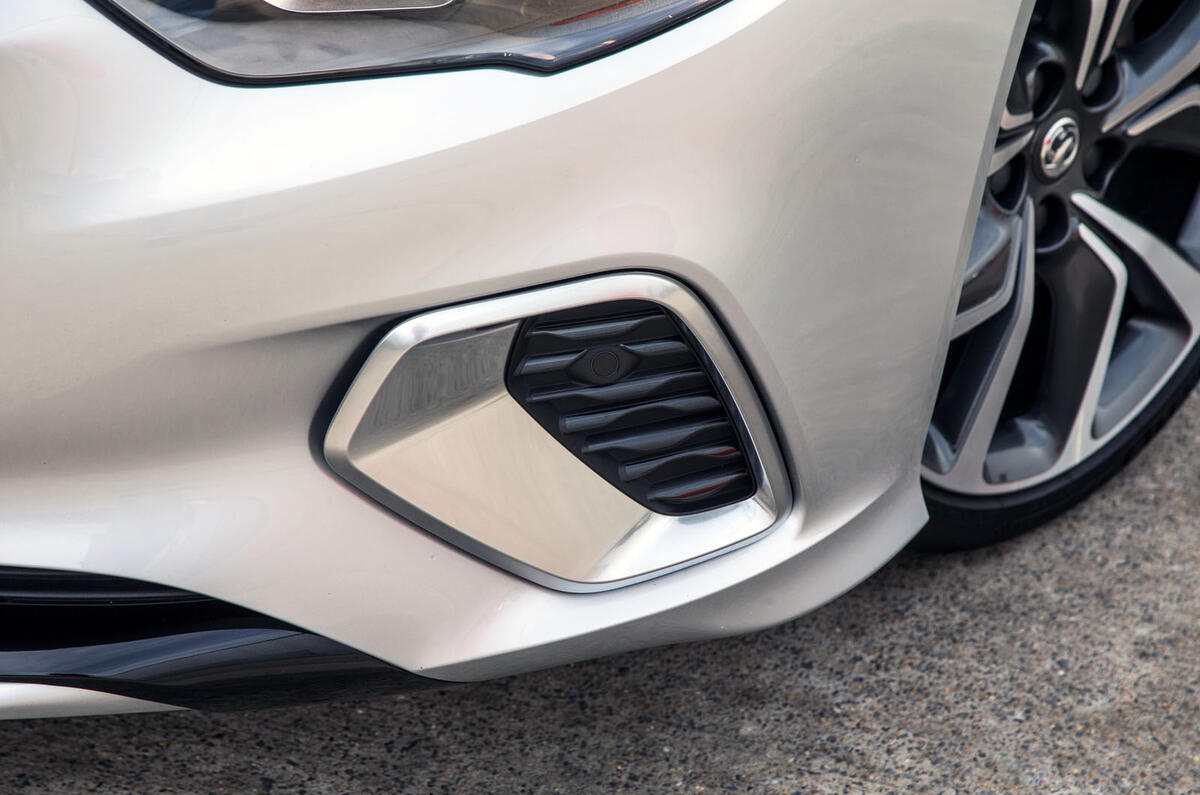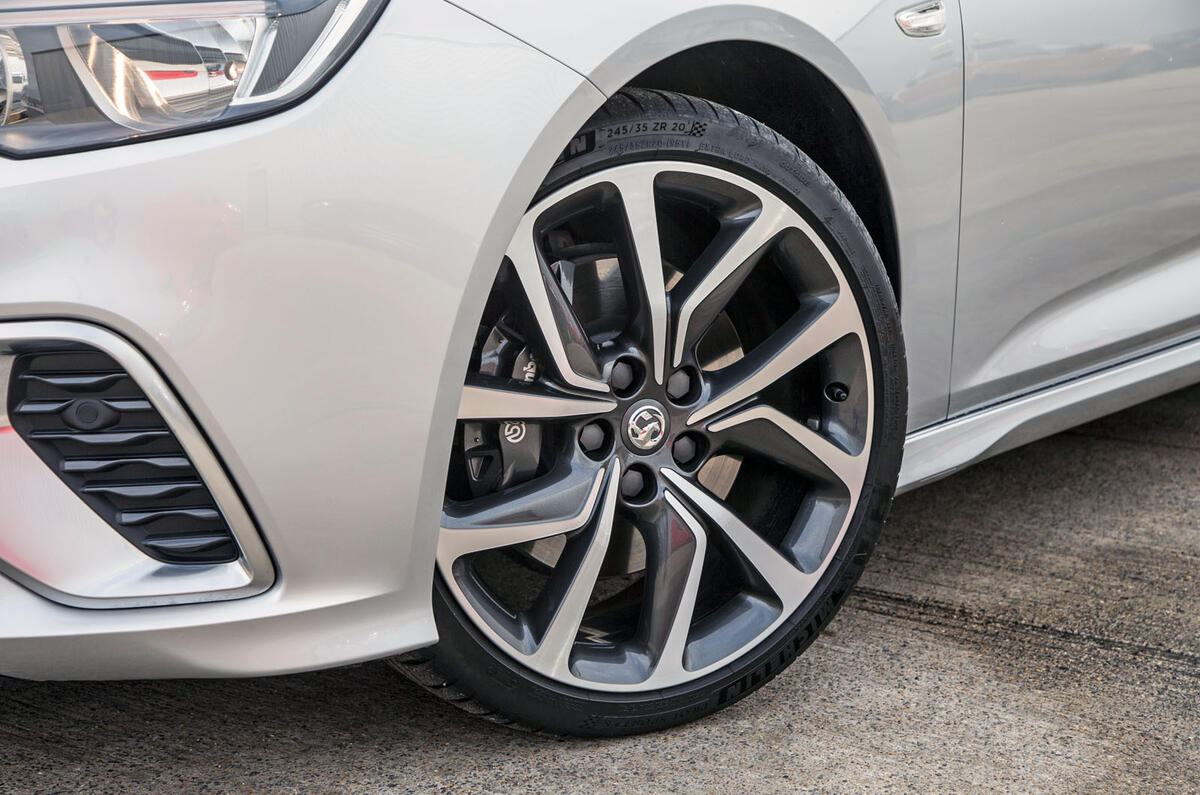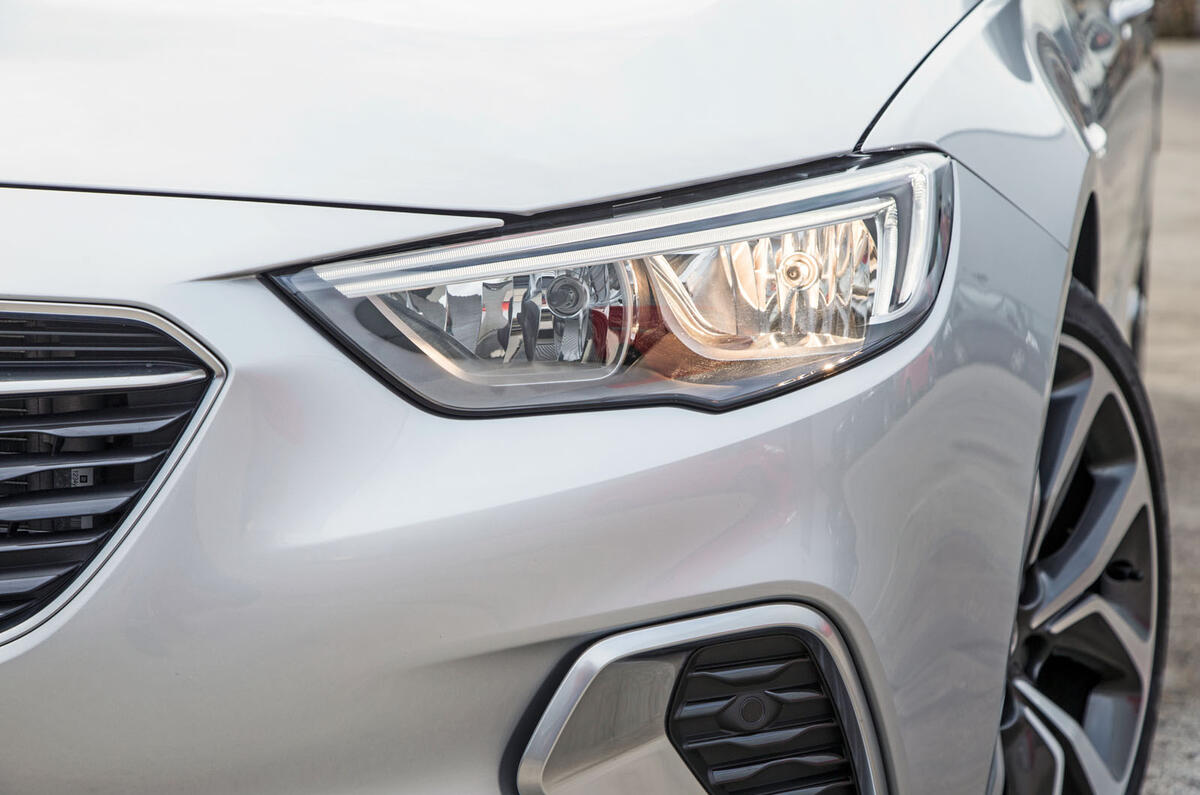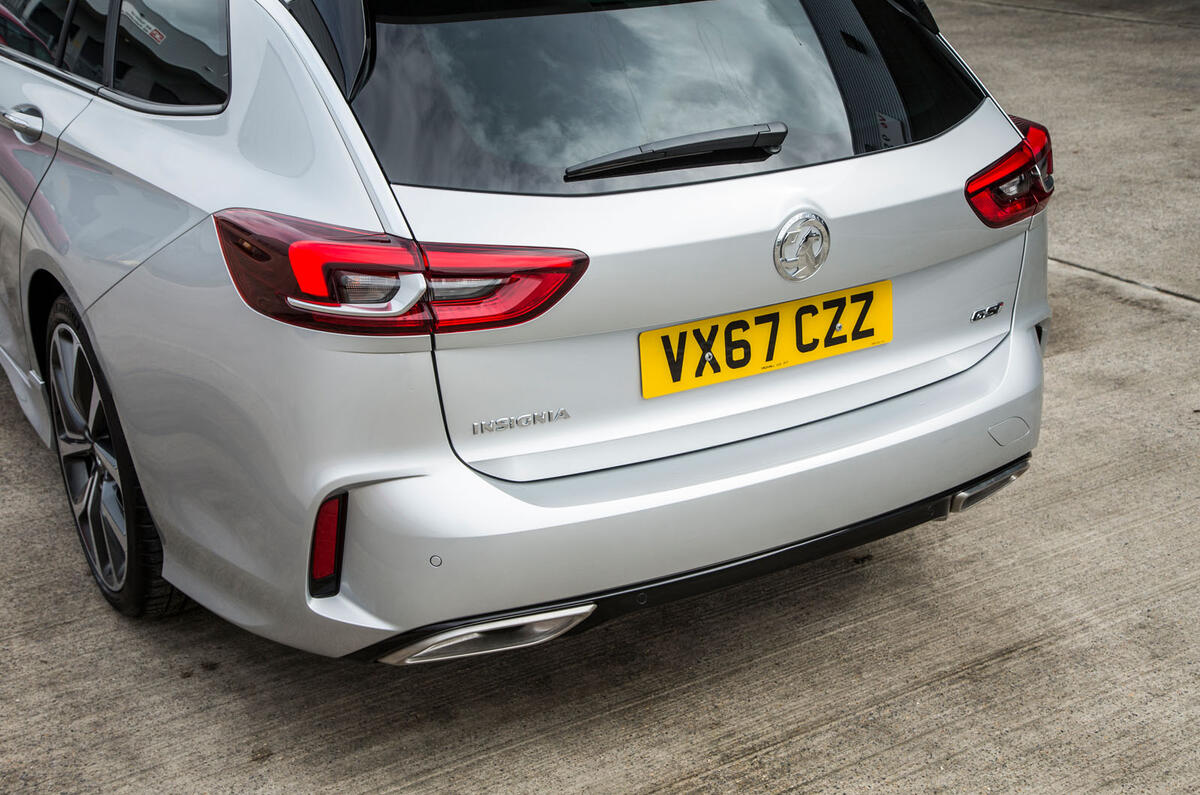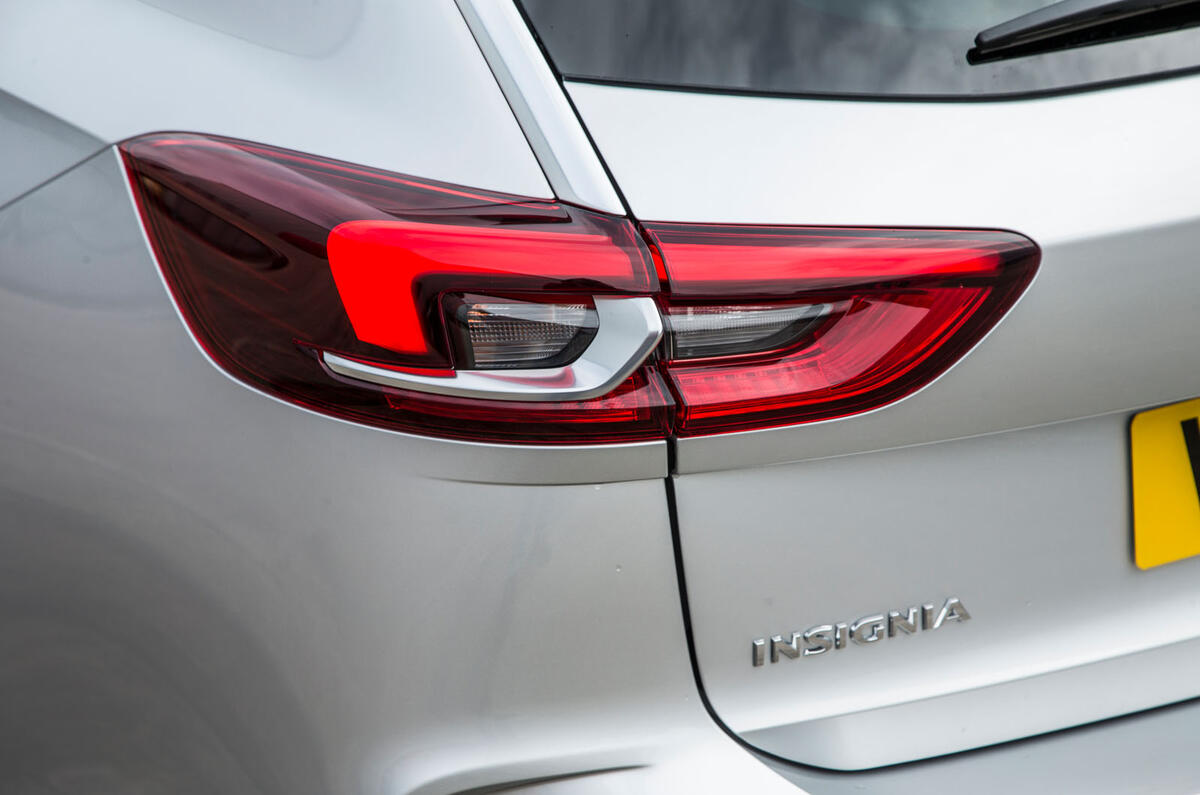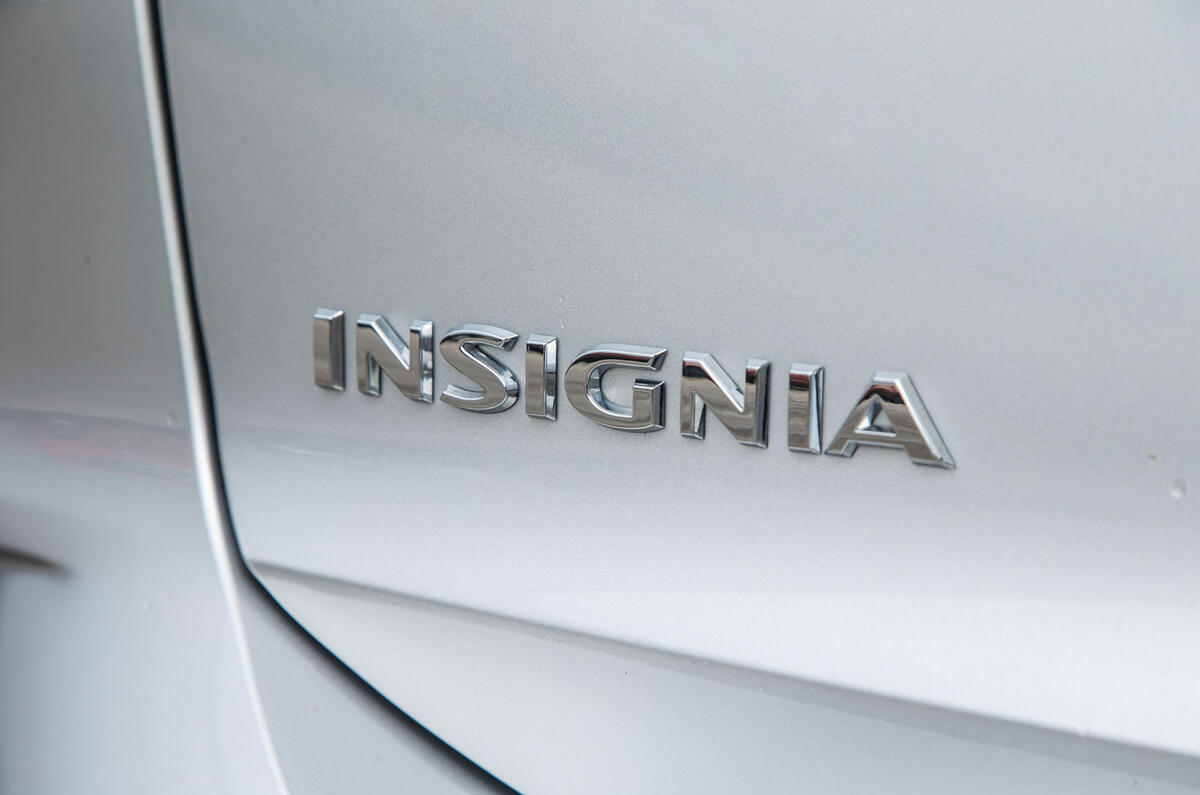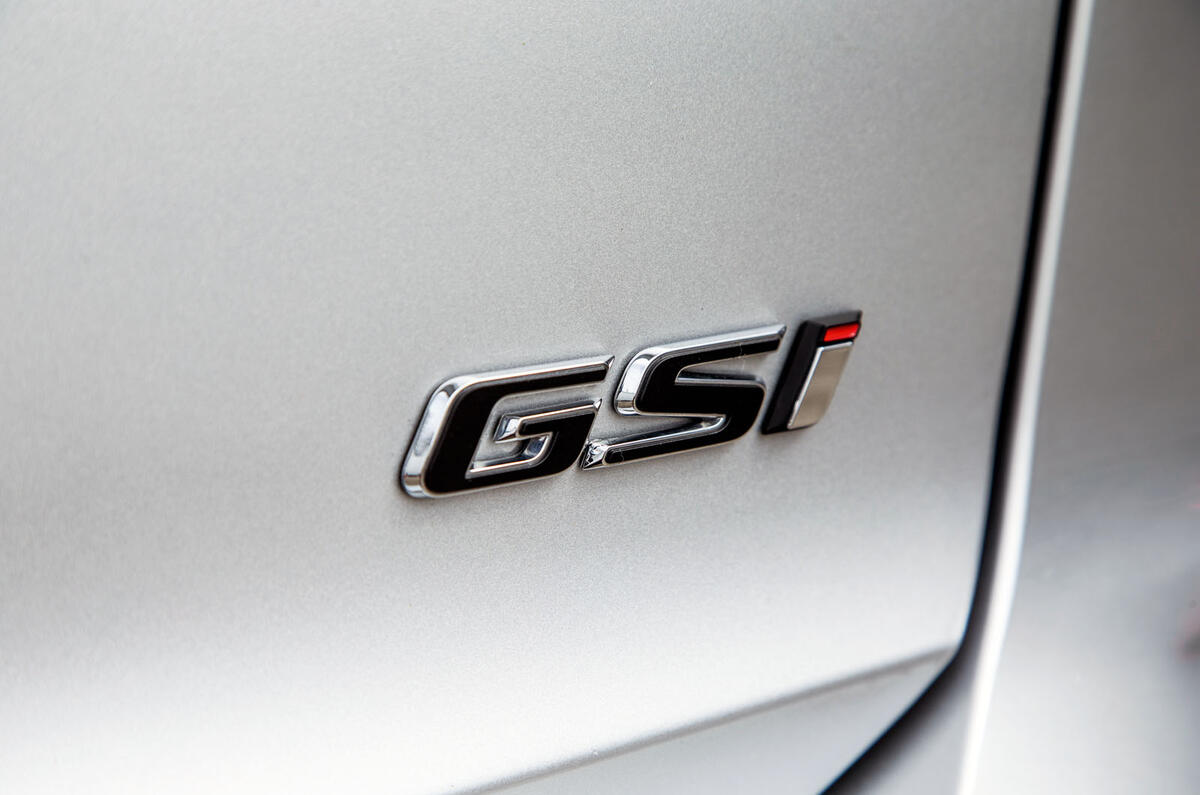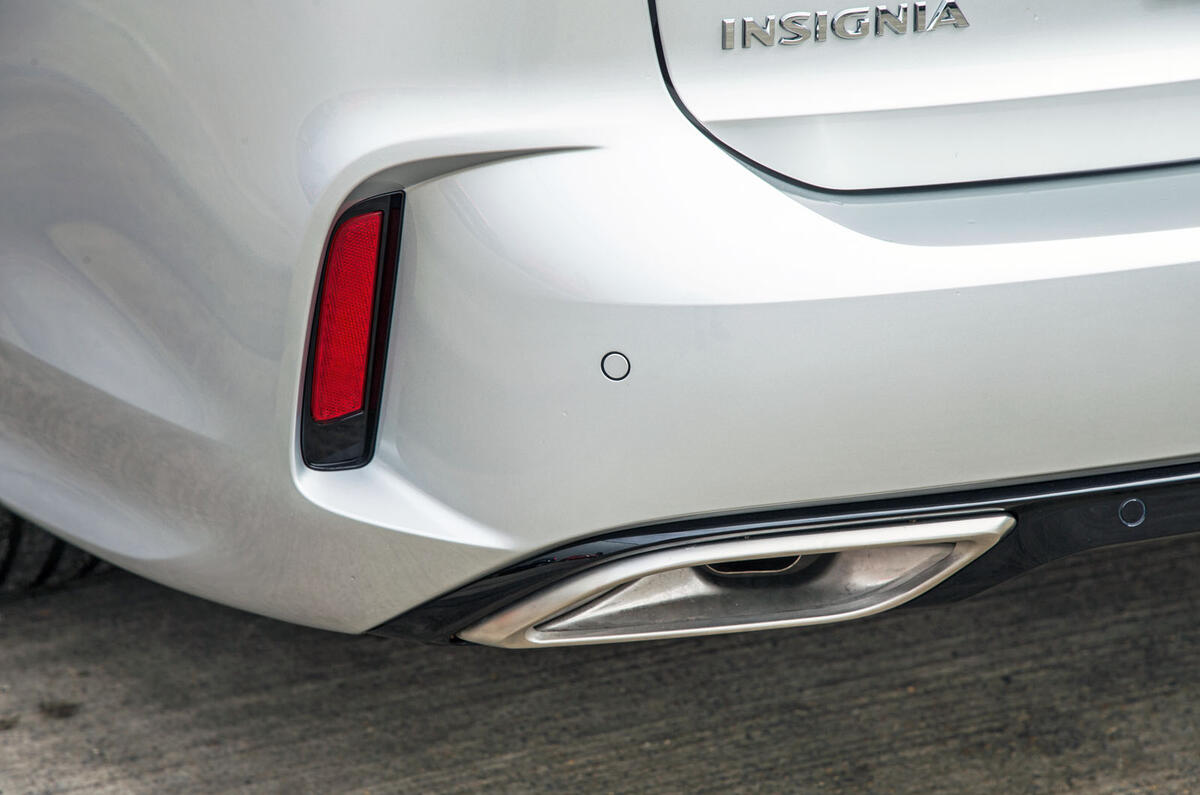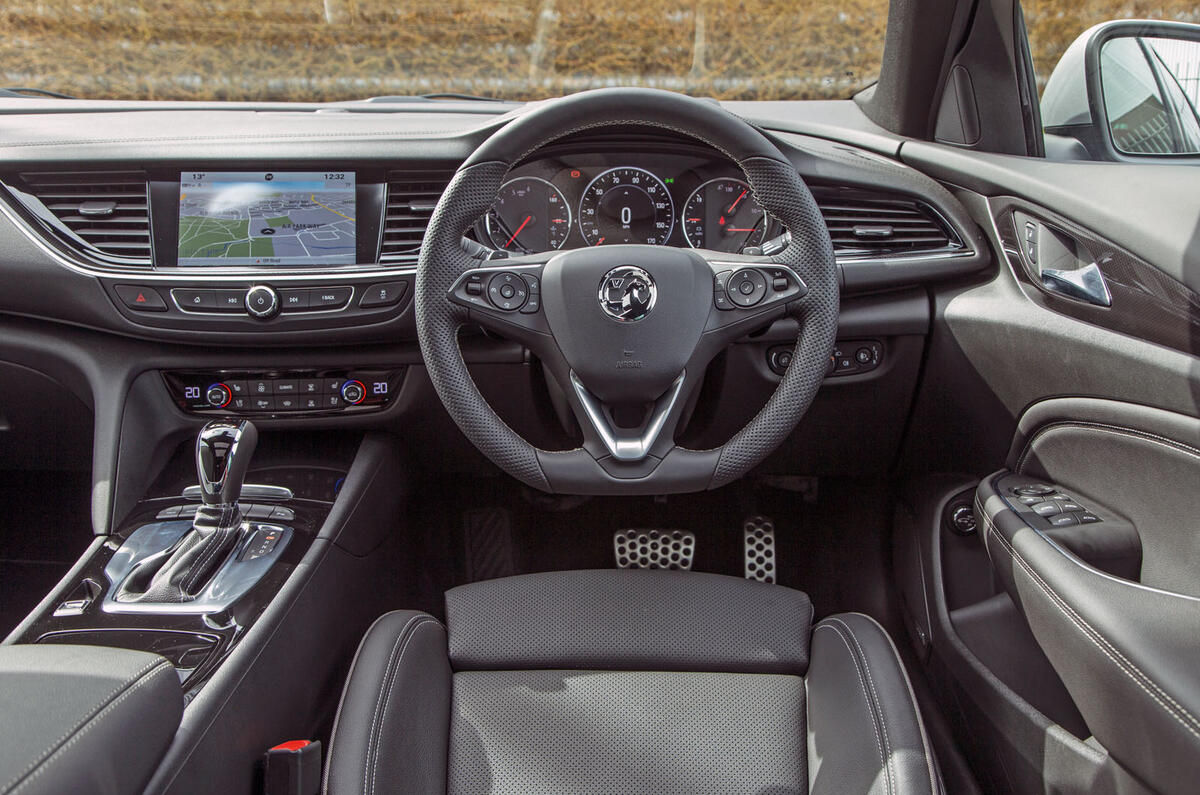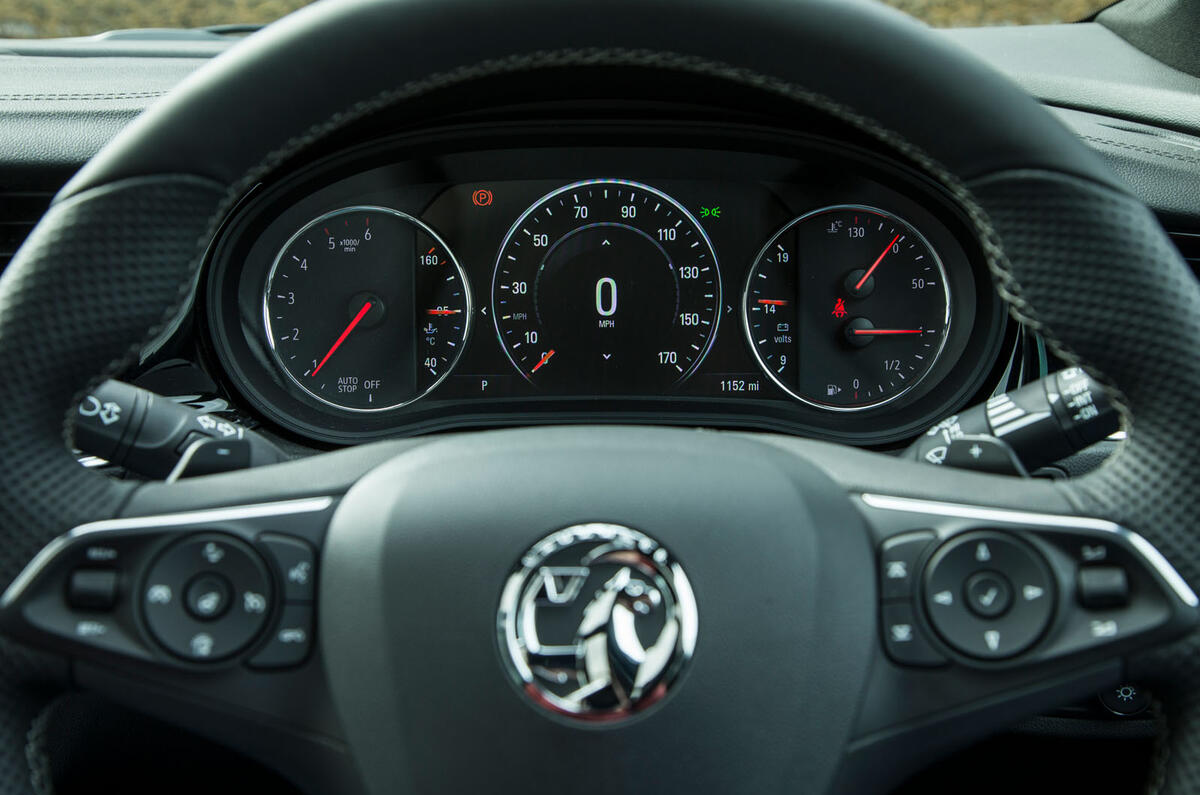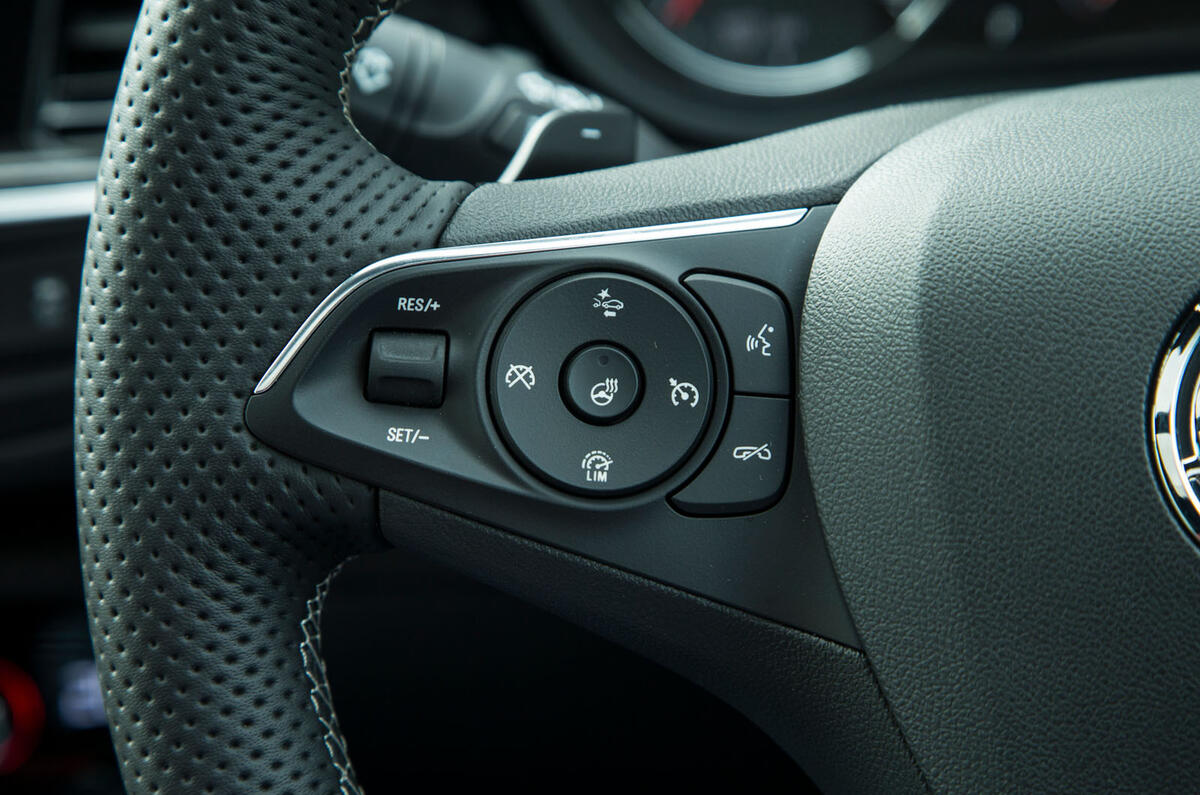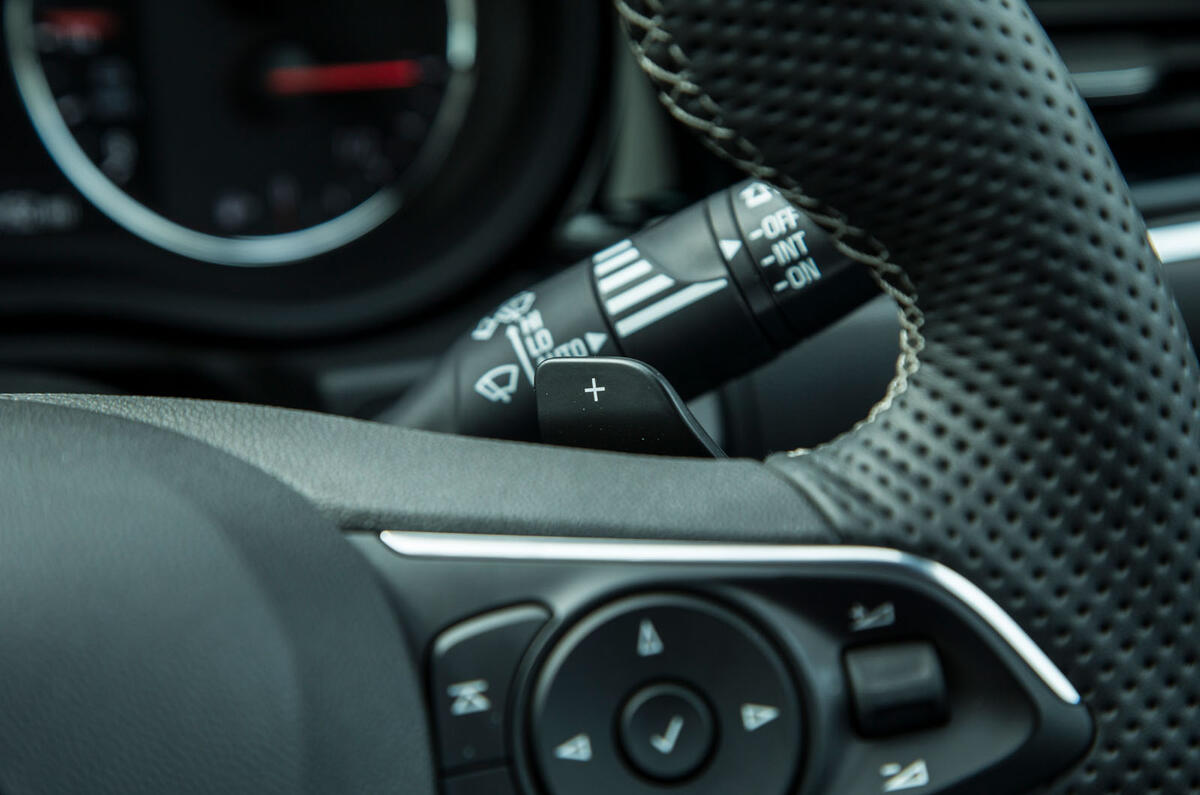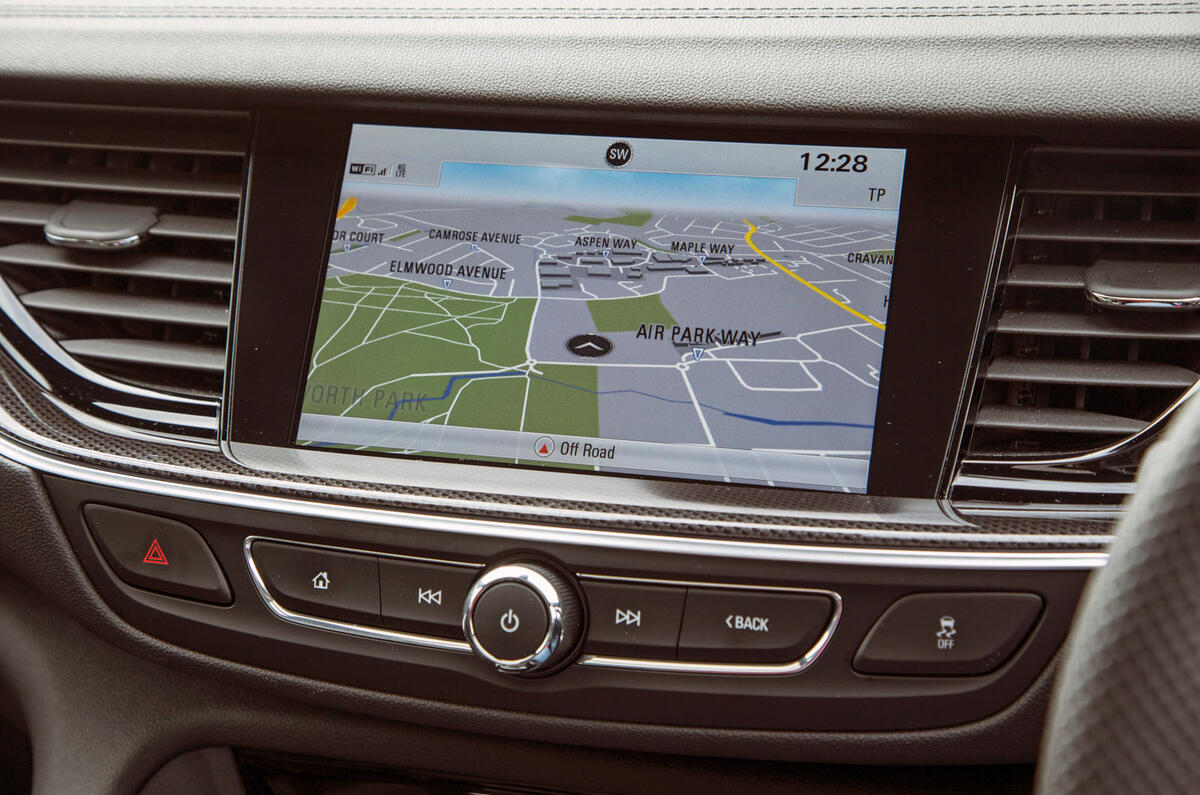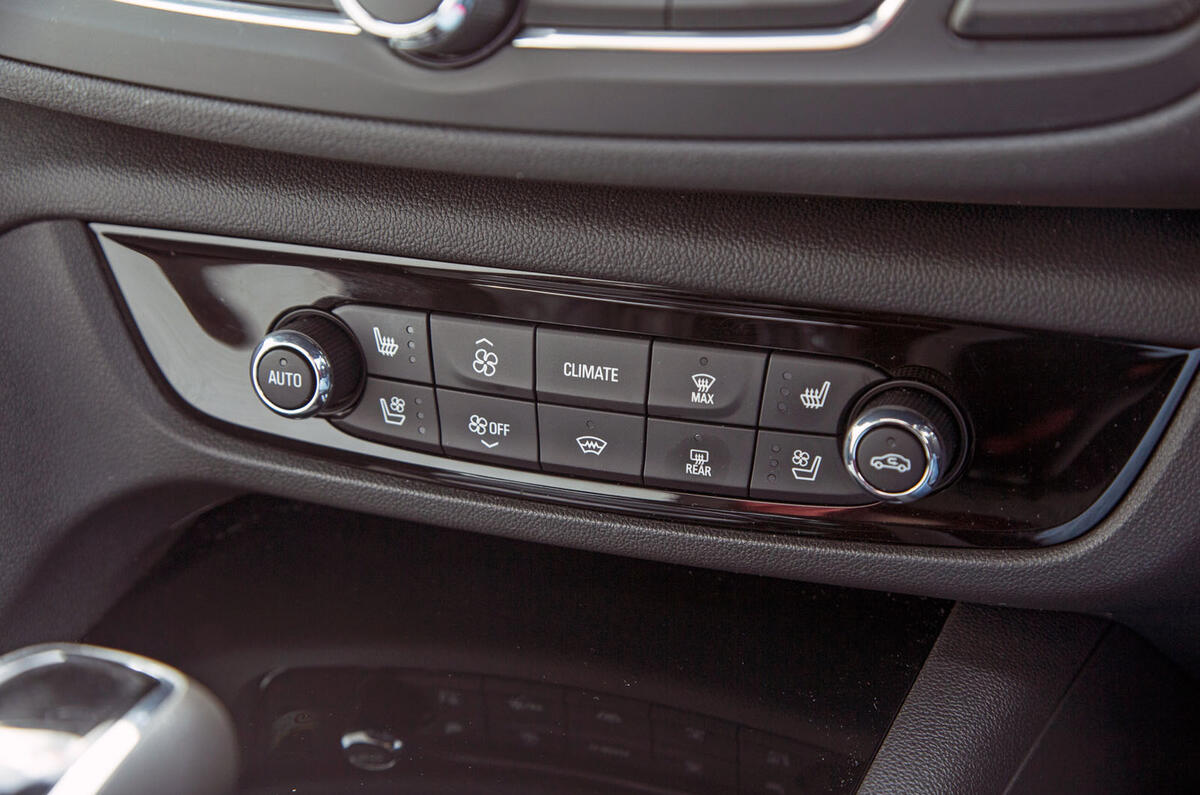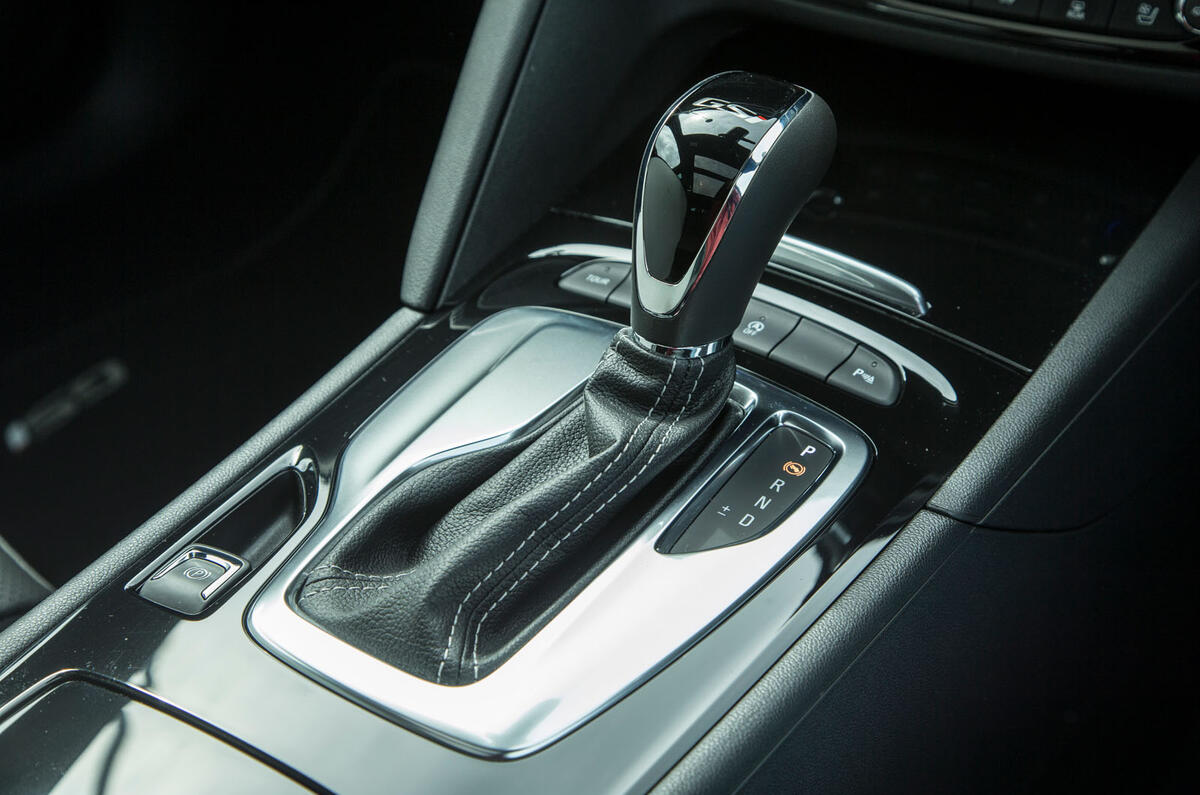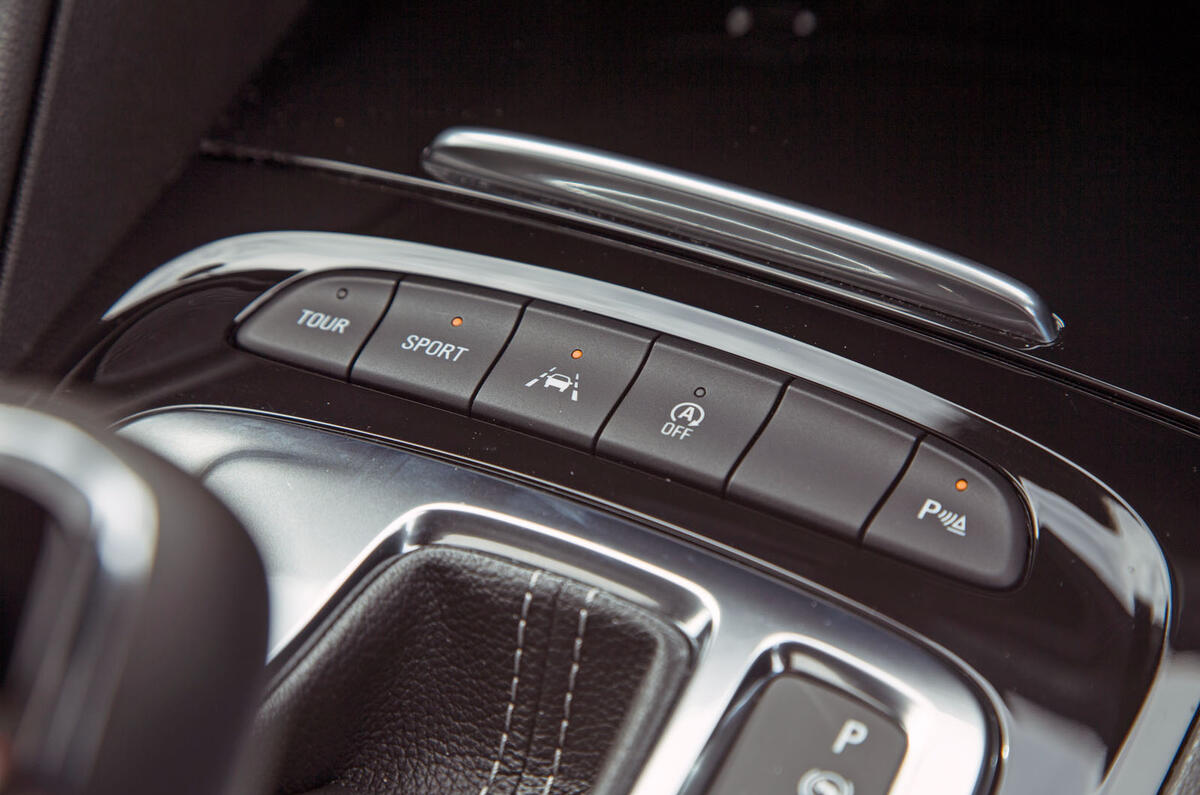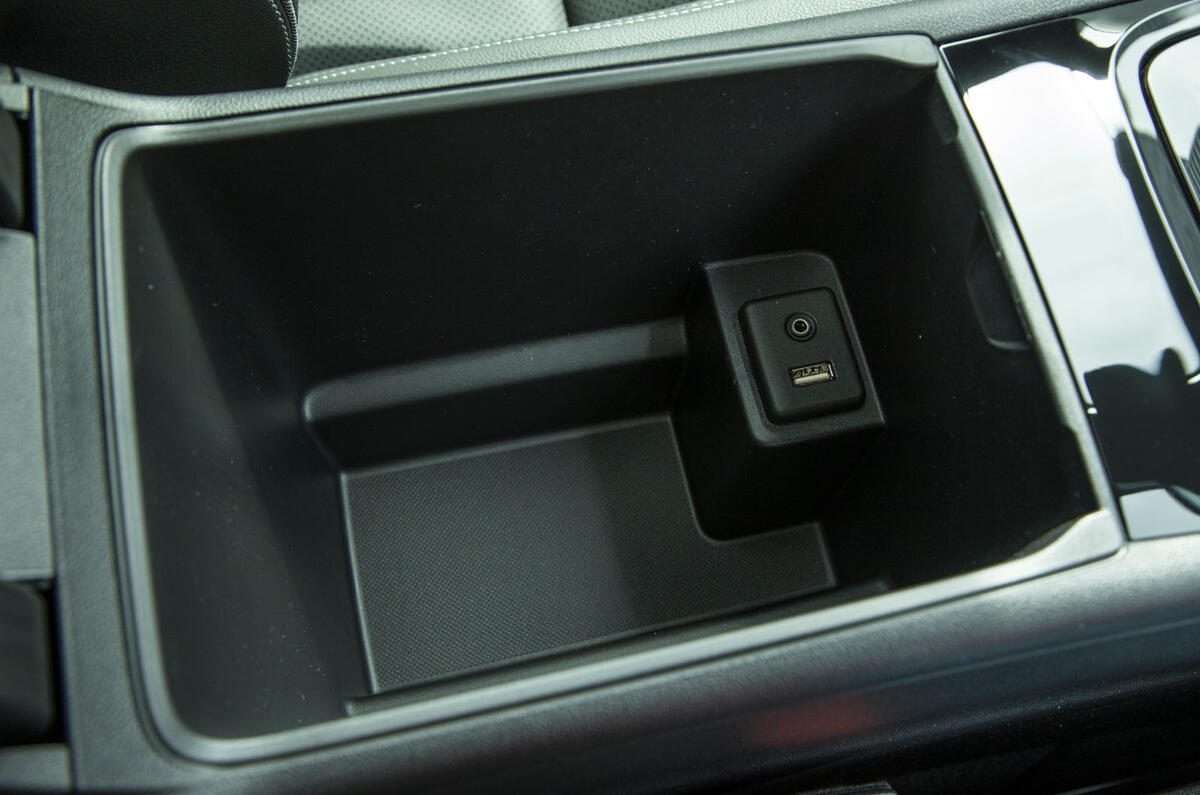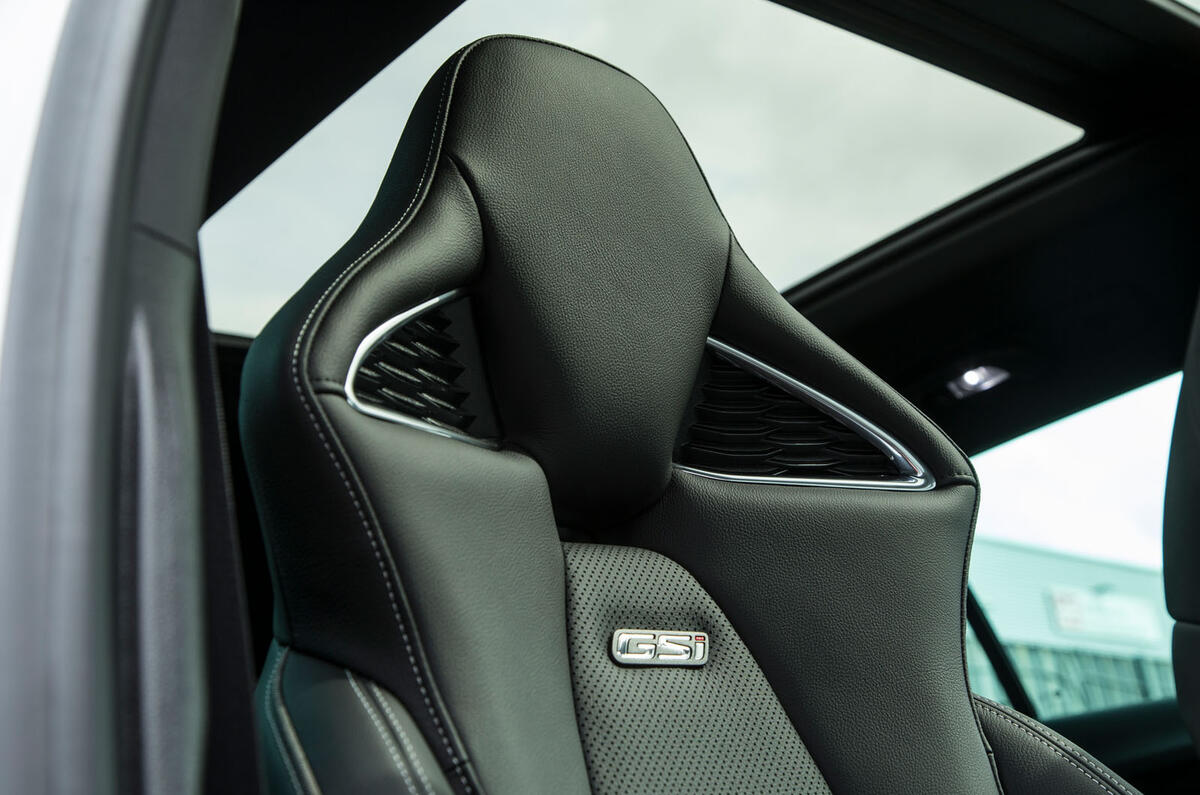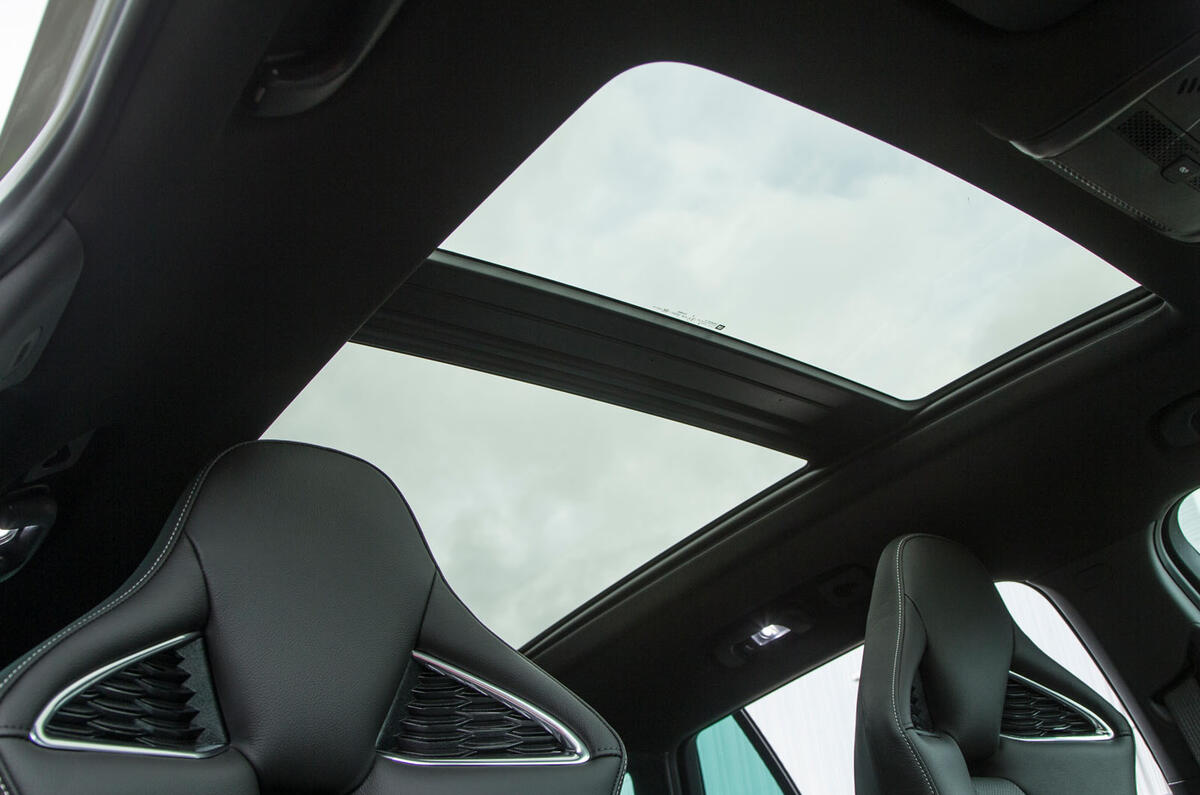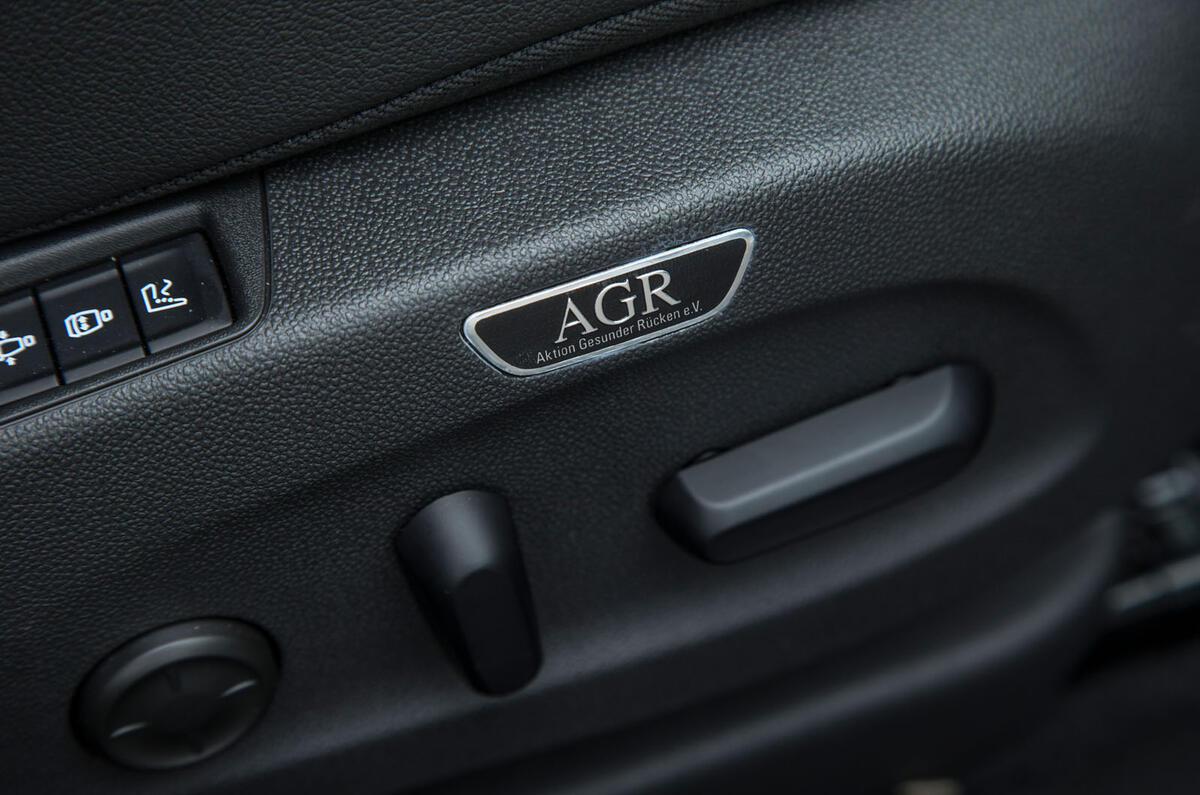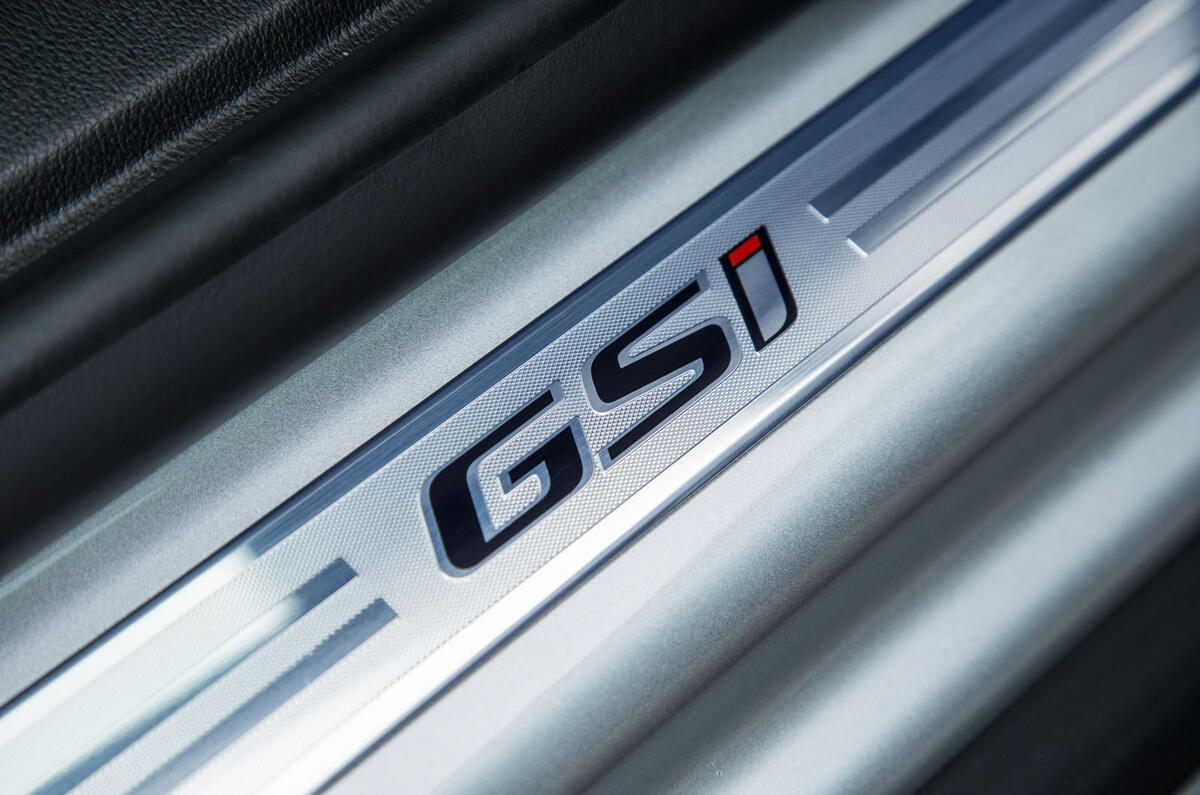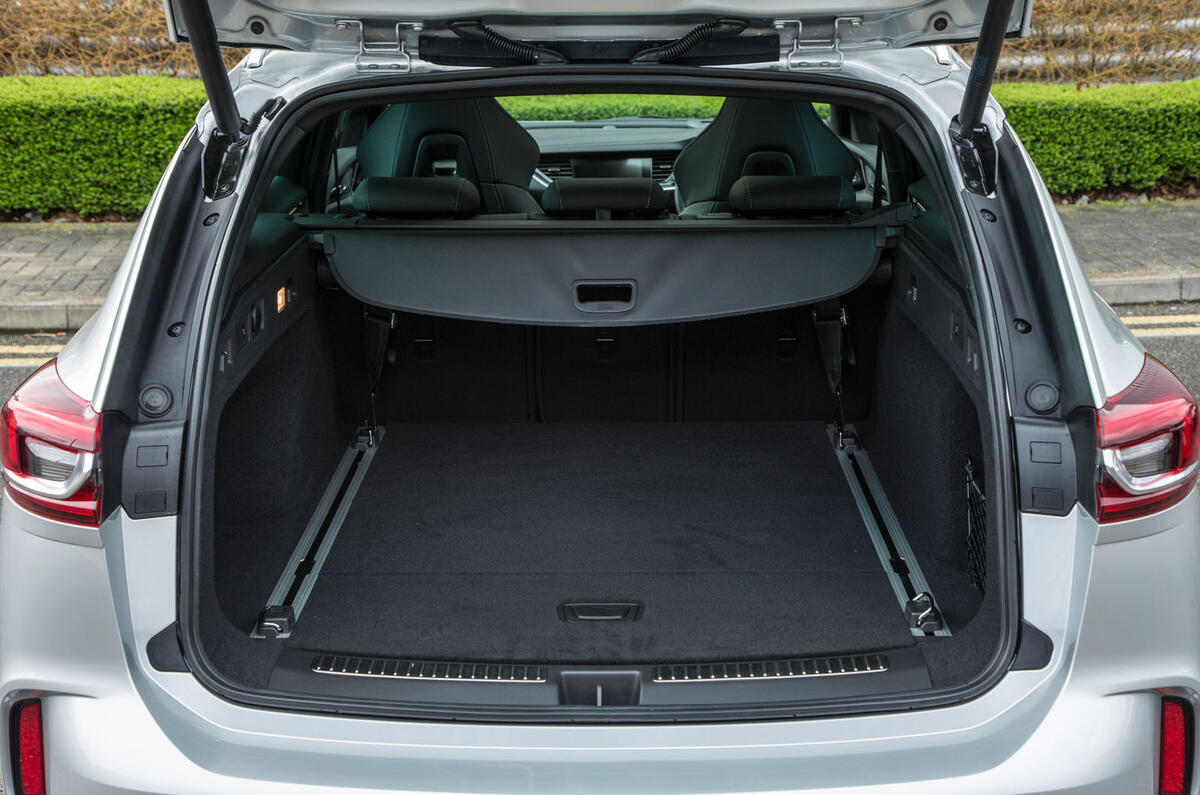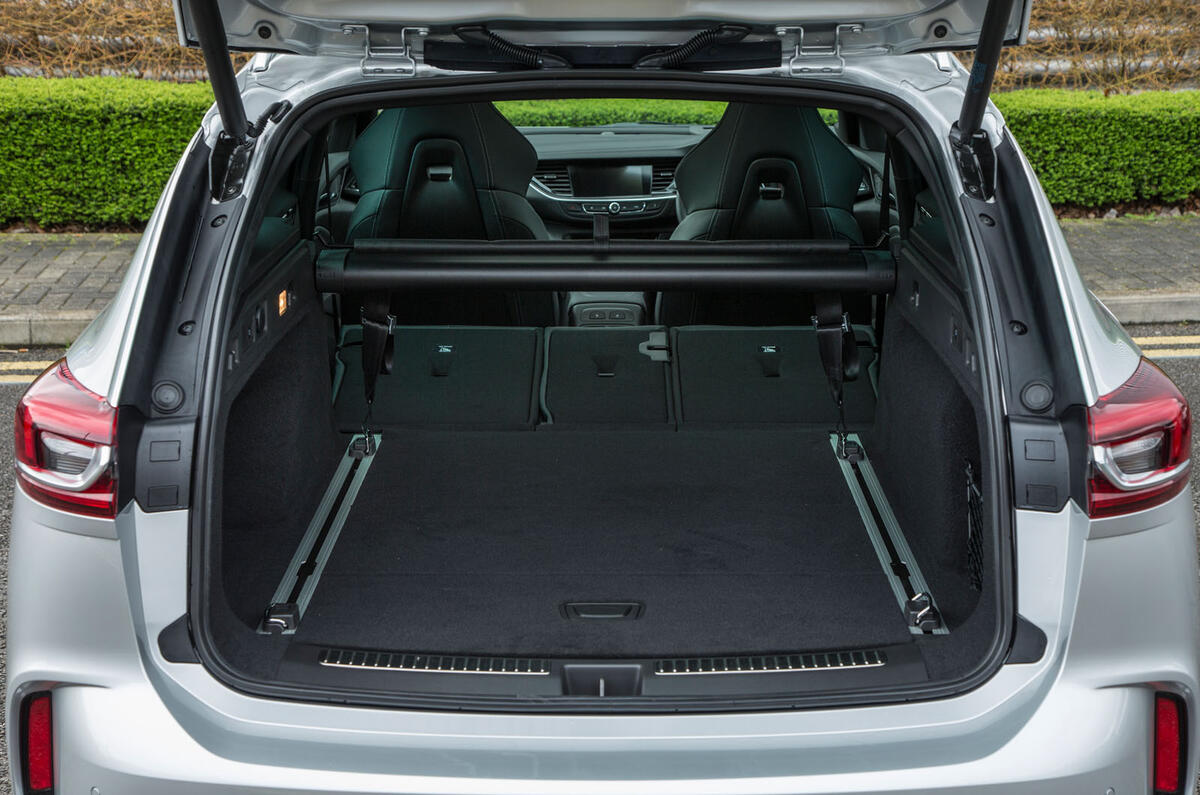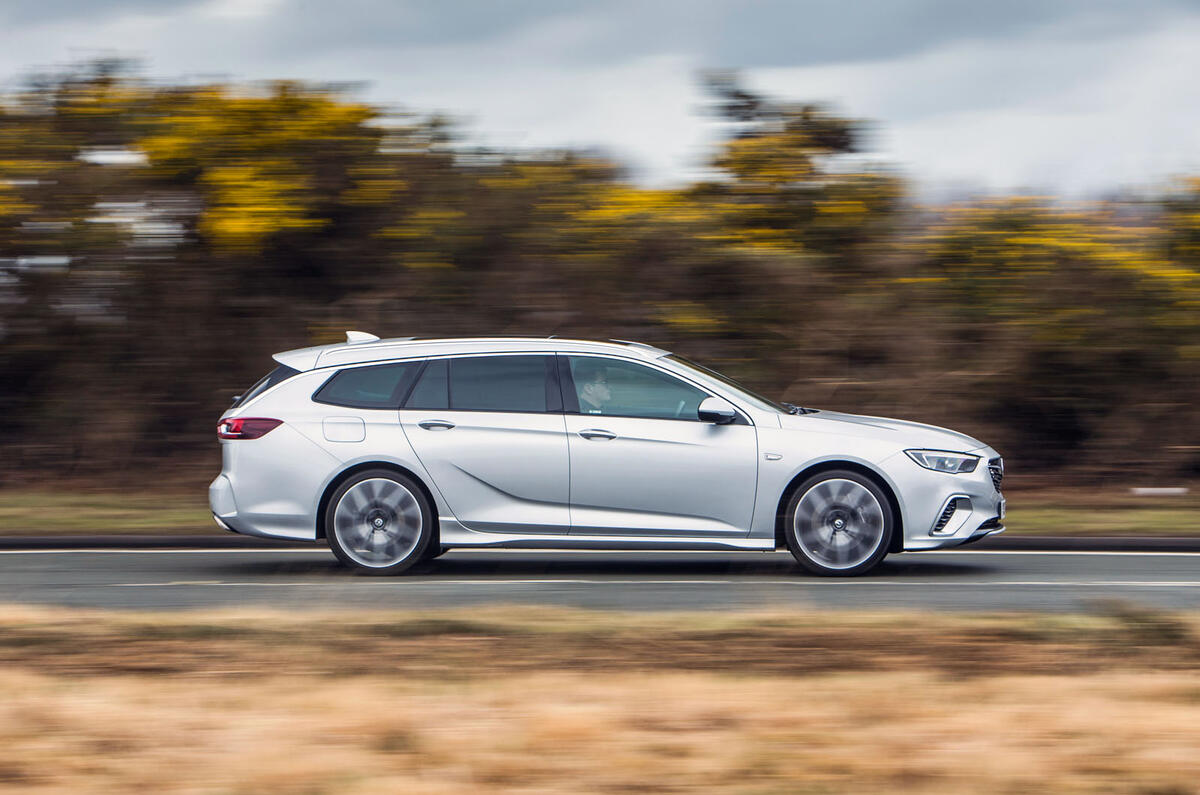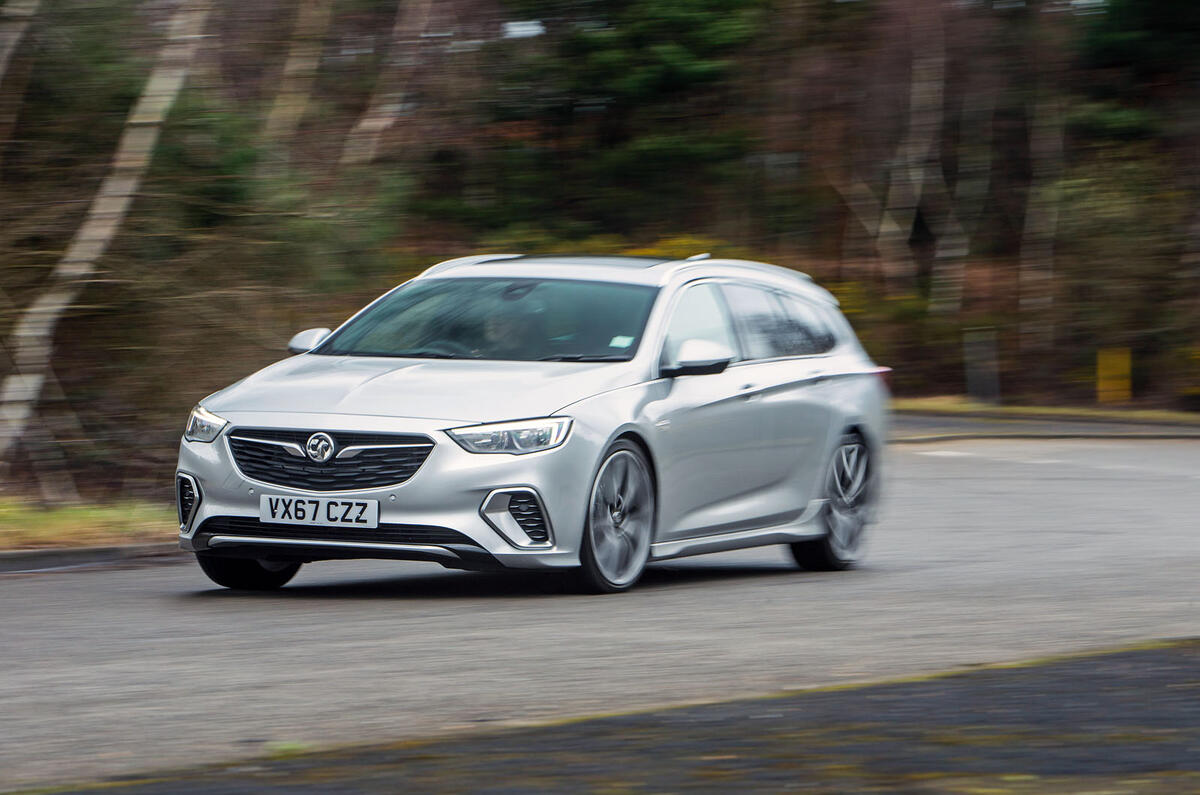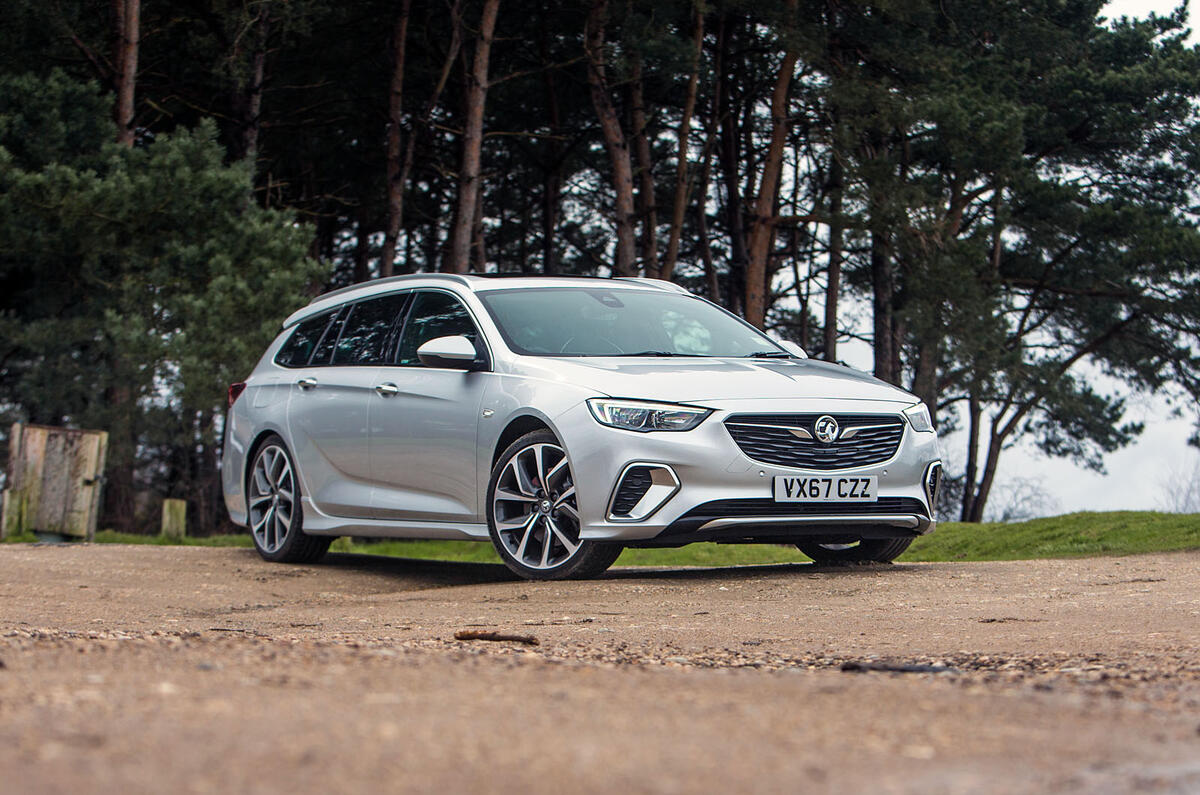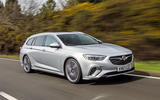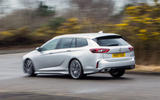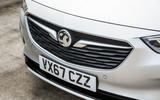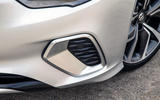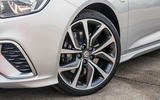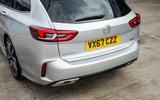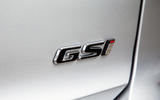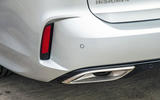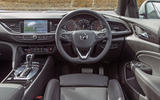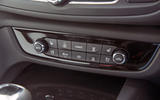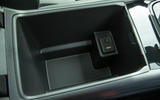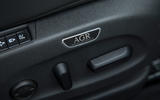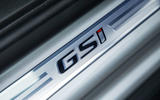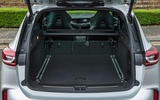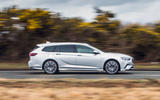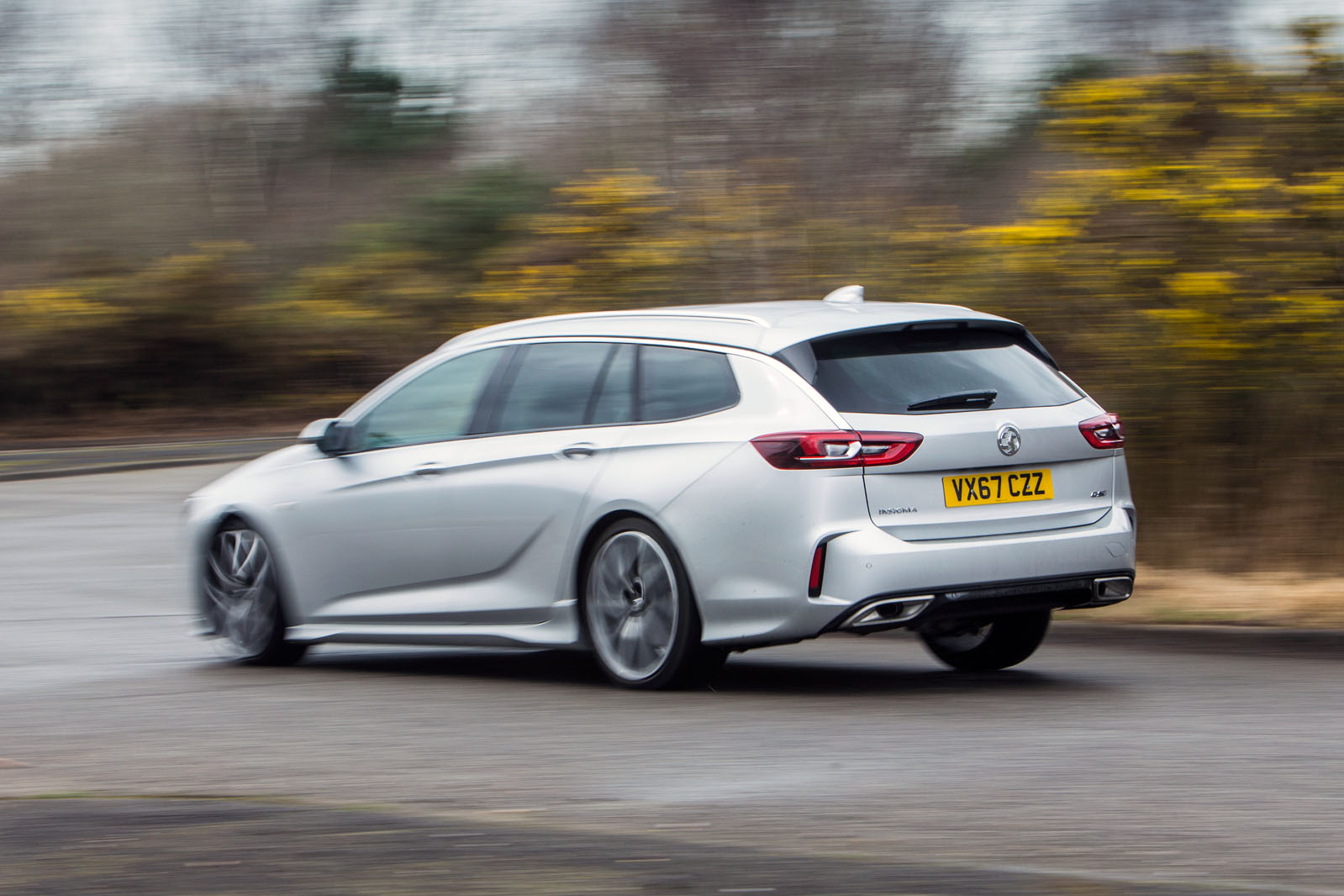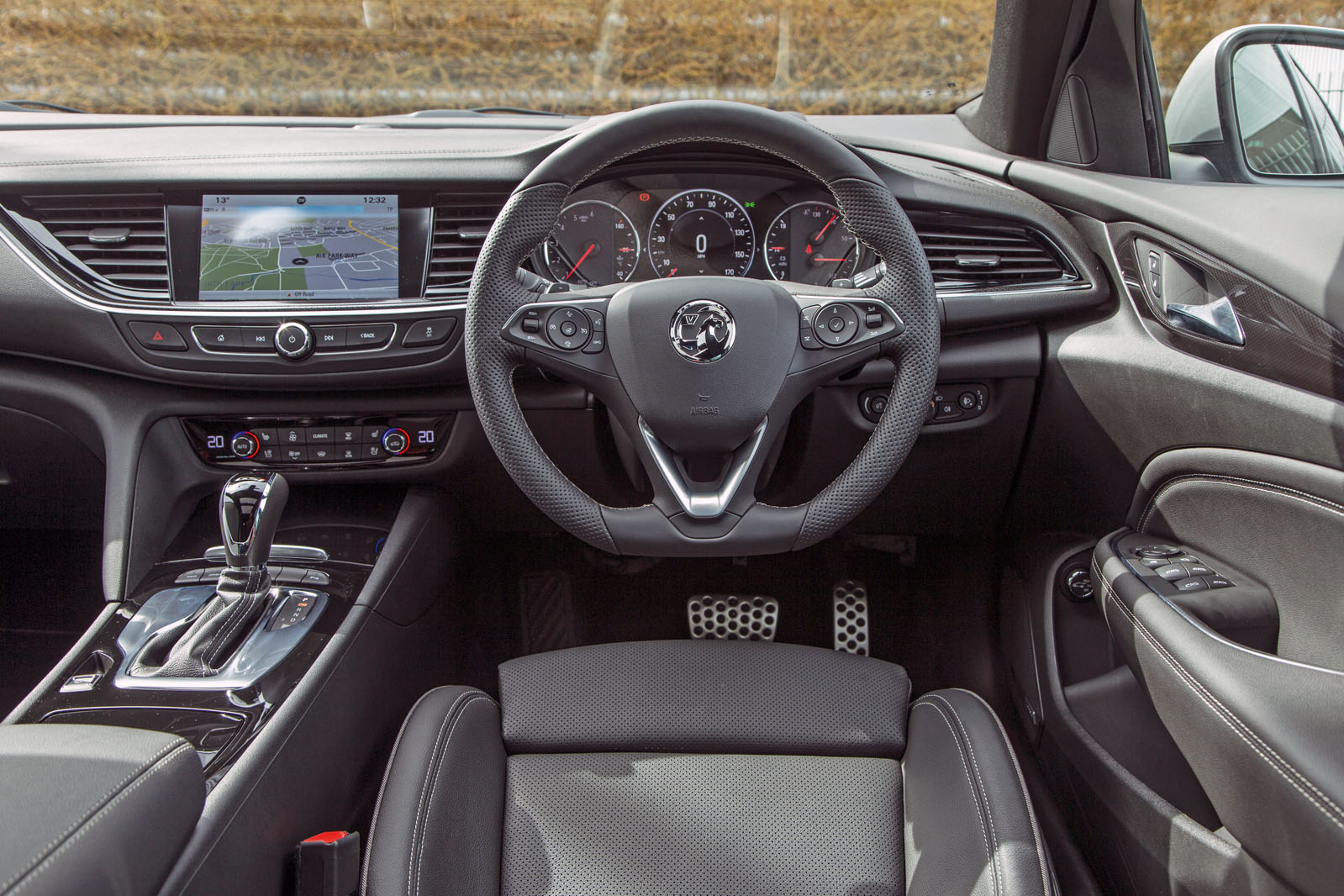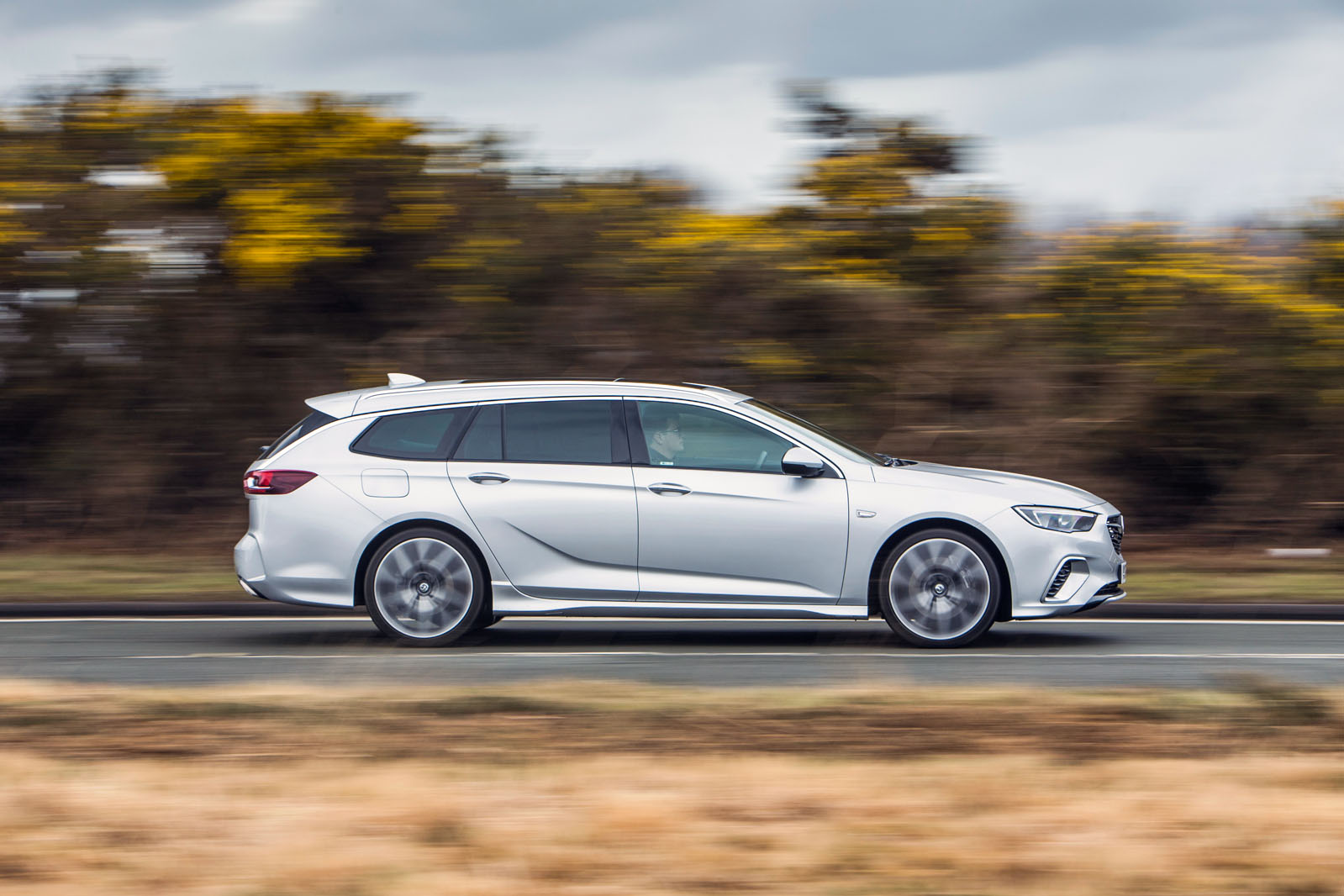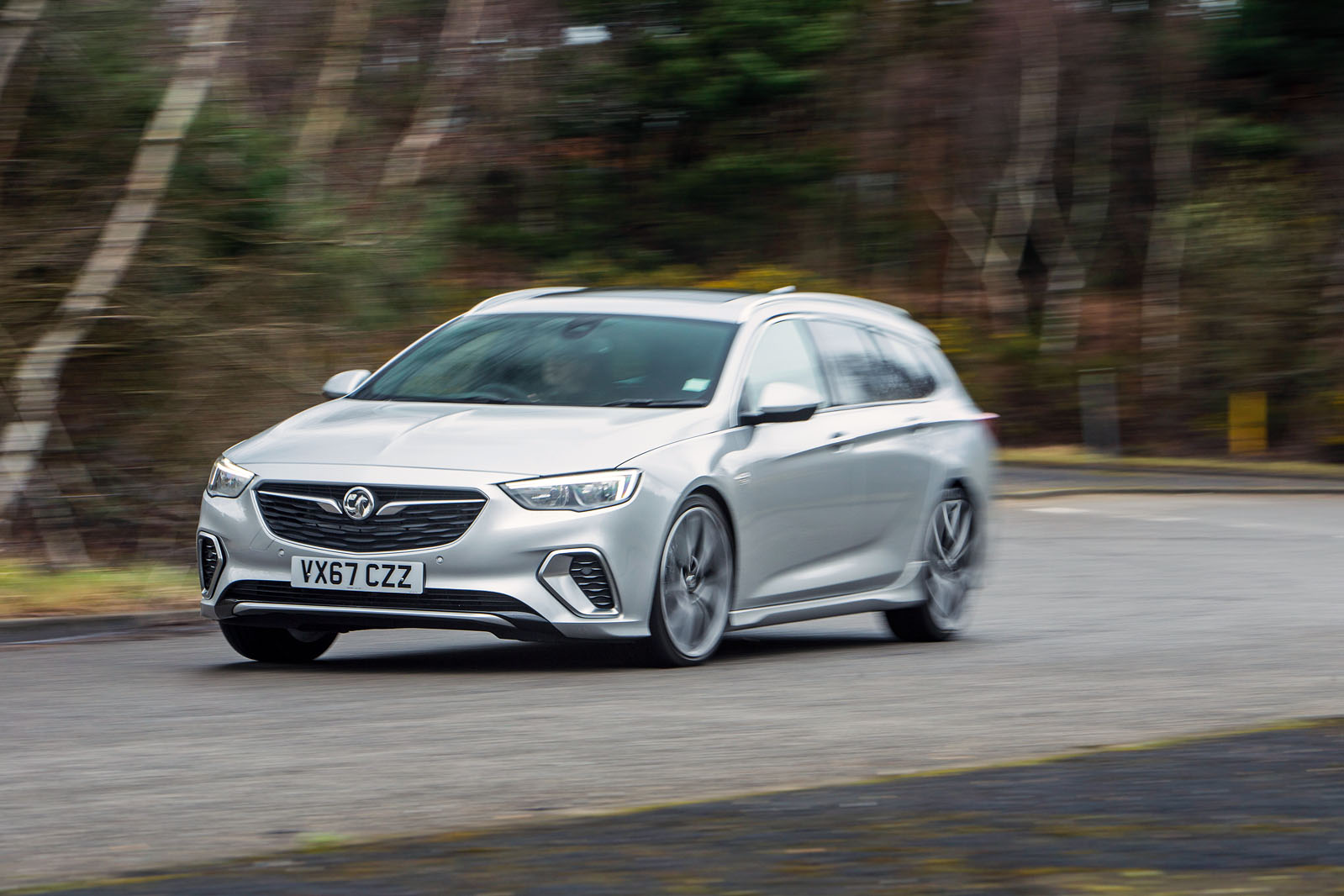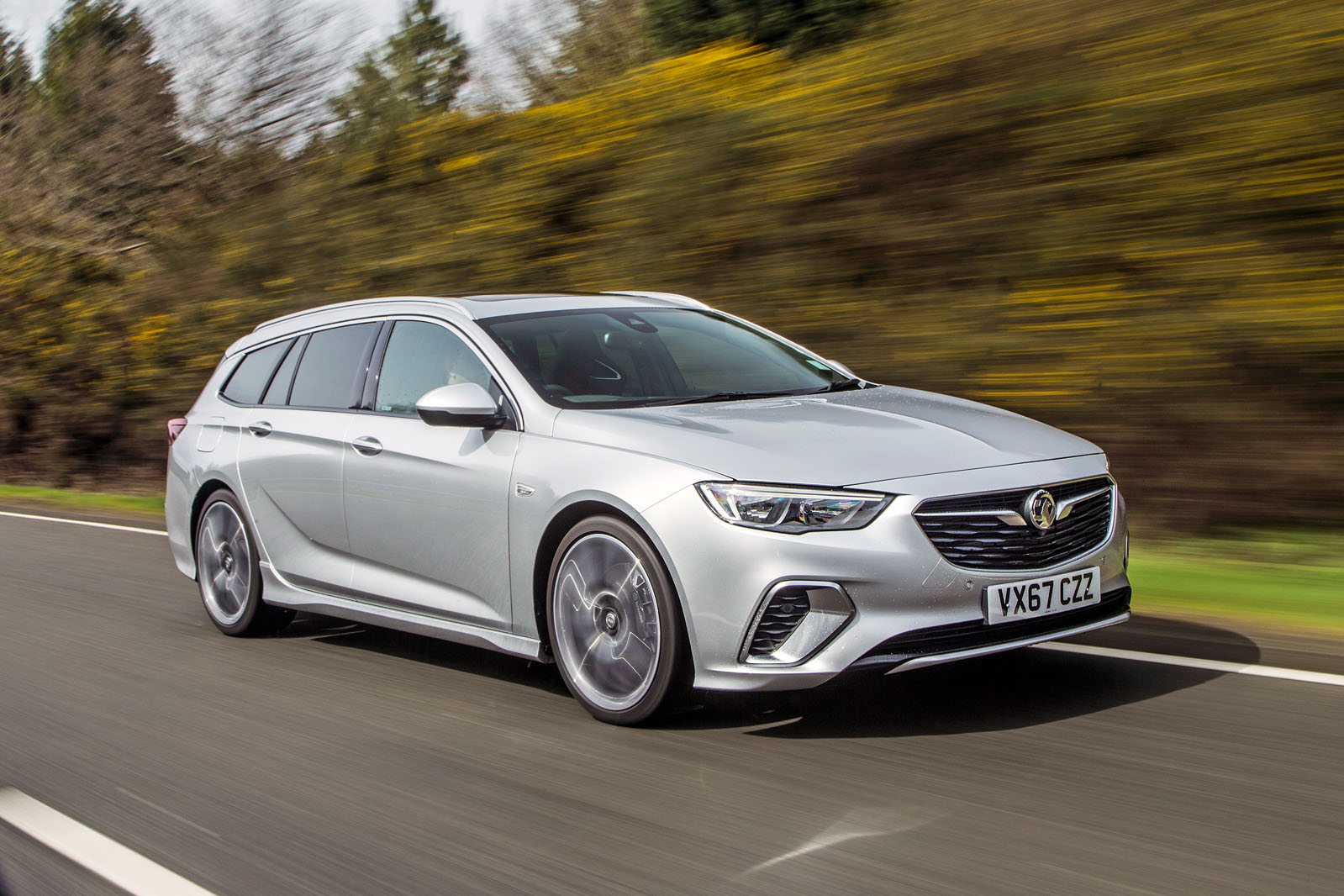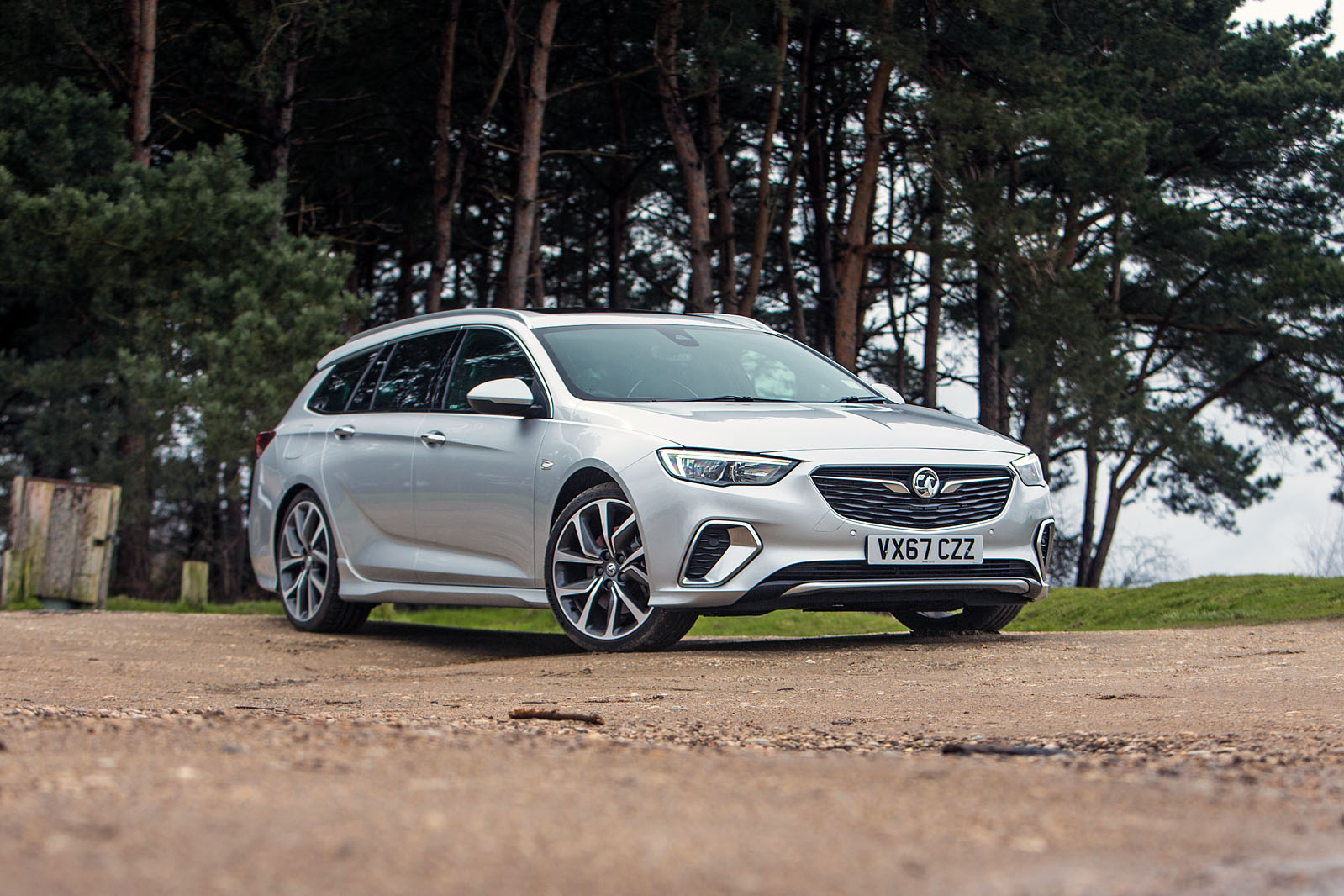The Insignia GSi’s cabin doesn’t immediately strike you as one that has been given an appetite-whetting performance makeover.
A pair of leather-upholstered sports front seats are the clearest indicator that you’re in something with sporting ambitions. They’re fairly large but offer good lateral support and adjustability, allowing you to sit low down in the cabin for a more sporting driving position than in a normal Insignia.
Vauxhall’s Navi 900 Intellilink system isn’t the most advanced or impressive infotainment on the market, but it has all the key features you might need. Satellite navigation, DAB radio, Bluetooth connectivity, Android Auto and Apple CarPlay are all included as standard, as is a Bose premium sound system.
The screen itself sits in a small recess in the dashboard and is easy to reach from the driver’s seat. It’s simple to navigate between the menus using the touchscreen itself, and buttons in the centre of the dashboard allow for quick navigation to the home screen and track selection.
Graphically, the satellite navigation system is fairly basic, but streets are clearly legible and directions easy to follow. Interestingly for a car at this price point, the Insignia GSi Nav doesn’t include a reversing camera.
The steering wheel adjusts for both rake and reach, so in terms of ergonomics, Vauxhall has done a commendable job. The material quality and richness you expect of a top-of-the-range performance derivative is notable largely by its absence, though.
Soft-touch plastics dominate the dashboard and harder, scratchier materials are used in the lower reaches – just as they are in a normal Insignia. Vauxhall has fitted chromed and piano black panelling in an apparent attempt at lifting the Insignia’s ambience, although this only really serves to leave the cabin feeling rather dull and monochrome.
Still, while the Vauxhall may not impress so much on a visual level, it champions practicality. Up front, there’s plenty of space between the driver and passenger, and those in the rear will find an abundance of leg and head room.
The main draw, though, is the Insignia Sports Tourer’s load-carrying ability. Lifting the tailgate reveals a large, wide boot aperture that provides access to a 560-litre cargo area when the rear seats are in place and 1665 litres with the back seats folded down.
The boot floor is flush with the rear bumper, so there’s no large lip to lift heavy items over, and a number of hooks provide handy mounting points to stop the weekly shop from sliding about on the way home.
For the sake of comparison, a Ford Mondeo estate offers between 500 and 1605 litres of luggage capacity depending on the seating configuration, and the Skoda Superb estate trumps both with 660 litres available with the rear seats in place and a cavernous 1950 litres if they’re folded flat.


